#homosexual life campaign
Photo
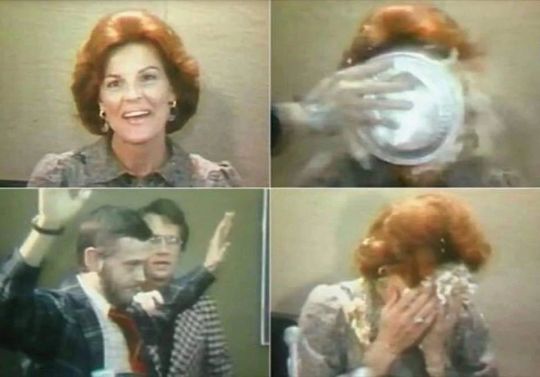
On this day, 14 October 1977, anti-gay crusader Anita Bryant was "pied" in the face by Thom Higgins, a gay rights activist. Bryant, who was already well-known as a singer, led Save Our Children, a homophobic campaigning group which successfully overturned legal protections for LGBT+ people in Dade County, Florida. Bryant had declared about homosexuality: "I will lead such a crusade to stop it as this country has not seen before." After being pied, Bryant burst into tears and began praying. Bryant was also brand ambassador for Florida orange juice, which then became subjected to a mass boycott campaign. Gay bars replaced screwdrivers (vodka and orange juice cocktails) with "Anita Bryants" – made with vodka and apple juice, with the profits donated to the campaign. Bryant's lucrative orange contract subsequently lapsed and her marriage failed, which caused her to be ostracised by some Christian fundamentalists who did not approve of her divorce. Later in life, Bryant's homophobic views softened, and she stated she was "more inclined to say live and let live". In 1998, Dade County reintroduced legal protections for LGBT+ people, and efforts by Christian groups to overturn them failed. We've produced a number of podcasts about LGBT+ history, you can check them out here: https://workingclasshistory.com/tag/lgbtq/ https://www.facebook.com/workingclasshistory/photos/a.1819457841572691/2109212745930531/?type=3
21K notes
·
View notes
Text
109 years ago today, leo frank, an innocent american jewish man, was lynched.
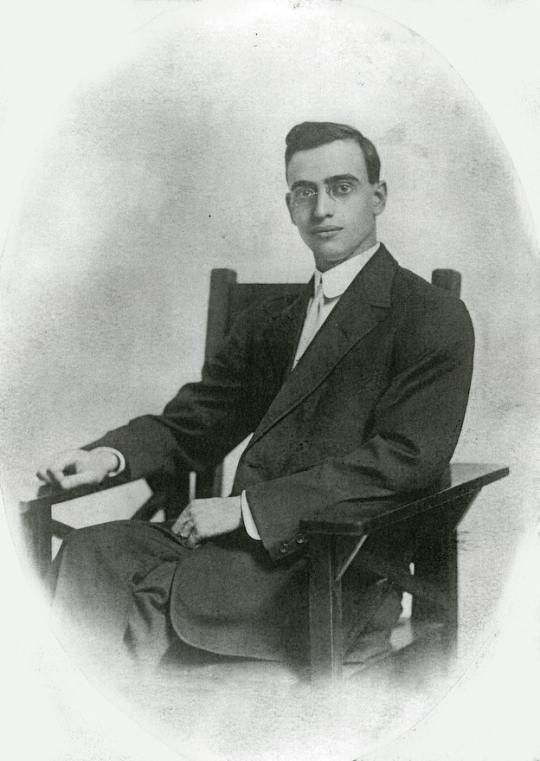
in 1913, leo frank was arrested for the murder of mary phagan. despite evidence that he was at home at the time of the murder, the jury decided in just four hours that he was guilty and the judge sentenced him to death. all of frank's appeals were rejected. protests erupted outside the governor's mansion when the governor decided to commute frank's sentence from death to life imprisonment, and on august 17th, 1915, a group of 25 men kidnapped frank from the prison hospital where he was recovering from an attempt on his life, drove him 100 miles to mary phagan's hometown, and lynched him. there are several photos of the lynching.
though frank is the only known jewish victim of lynching in america, antisemitism was baked into the nation's history in numerous other ways. during the trial, the prosecuting attorney framed him as a sexual pervert who was both a homosexual and preyed on young girls. this is not the first time a jewish man has been framed as a sexual predatory because of his jewishness. it was simply the culmination of centuries of antisemitism that still persists to this day. (content warning for antisemitic caricatures and one graphic photo of the lynching of leo frank)
leo frank was proven innocent after his death, though many people still insist he was guilty, particularly white supremacists.
a musical called parade about the trial and tragic death of leo frank was written by jewish composer jason robert brown and jewish playwright alfred uhry. it premiered in 1988 and was revived in 2023 on broadway, starring jewish actors ben platt and micaela diamond, where neo nazis protested outside the theatre, claiming the show was "glorifying a pedophile."
as of writing this, tomorrow is the first day of elul, the last month in the jewish calendar culminating in the high holy days, the holiest days of the jewish year. every year, synagogues see an increase in negative attention and antisemitism from their wider communities. we start to receive more hostile phone calls and emails, threats of violence, and this year there was a swatting campaign targeting at least 26 jewish institutions. we are supposed to be using this time to reflect and make amends with the people we've hurt, and instead so much of our time and energy had to go toward ensuring we can even safely walk into our communal spaces.
i don't have the answer for how to fix this or what you as a gentile should do. antisemitism is thousands of years old, and it's not going to stop because some well meaning people on tumblr read all the articles linked in this post. all i know is that jews all over the world are terrified and so, so tired.
710 notes
·
View notes
Text


BTS of #RWRBMovie: Alex's bisexuality
TZP via Glamour:
TZP: He's had sexual experiences with guys in the past, but he doesn't lead with it. I think it's not even top of mind. He's kissing girls at a New Year's party. And then Henry comes and kind of forces him to grow up and go, ‘Oh, I'm really into this.’ It turns into love, and his identity and family and relationships become even more important. I love that about Alex. Because who knows? If there's an alternative universe, who knows what would have happened if he didn't meet Henry? What if he didn't find a purpose or a higher path for himself other than just being a powerful politician?”
ML via Teen Vogue:
Alex's bisexuality is as important to who he is as Henry's homosexuality is.
This is the story of a young bisexual man discovering that, in addition to being into women, he also — he kind of knows that he's into guys. He admits freely to Nora that he has messed around with guys before, but he's never really had the need to identify until he meets Henry. One of the things that was important to me is that line that he has in that scene with Nora, that “I can wrap my head around being low level into guys, what I'm really confused about is being into Henry.” That for me was key. I needed the audience to hear that, that we're not dealing with a person who's — Alex isn’t a closet case. Alex isn't confused. Actually, if there's anything Alex is confused about, it’s “why am I hot for my sworn enemy?” That's a more interesting story to me. Alex's bisexuality finally needs to be identified in order to articulate his feelings for Henry.
ML via Variety:
In both the novel and the film, Prince Henry first kisses Alex on New Year’s Eve, but Alex’s reaction changed significantly in López’s adaptation. In the book, the kiss sends Alex into a profound realization of his bisexuality, something he’d never given himself time to consider amid his feverish devotion to his mother’s presidential campaign and his undergraduate studies at Georgetown University.
In the film, however, Alex is older — he appears to be in law school — and takes Henry’s kiss in stride, in so far as his attraction to men is concerned.
“It was born of my decision to cast actors who are older than the characters were in the book,” says López. “I really wanted there to be some genuine stakes and gravity for these characters. If they were too young, you could just explain this away as puppy love. I wanted this movie to be about that first real romance of your life, the first real love affair, the first real love.”
Rather than tell a story about a kid in his early 20s who is plunged into uncertainty about his sexuality, López says he wanted Alex to be someone who had messed around with guys but “has yet to have a reason to really understand himself as bisexual.”
The director continues, “I wanted Alex’s angst to not be about his sexuality. I wanted it to be focused on Henry.”
ML via Metro Weekly:
One of the things that I think was so beautiful about the story that Casey wrote, is that Alexis such a refreshing character because Alex is so clearly, very definitively bisexual, and that he might even be, I think, maybe that sociologists would term him as bisexual preferring women. He just happens to find himself really preferring Henry, and it surprises him. There's a scene in the movie with Nora, in which he says, "I can wrap my head around being into guys, what I'm really confused about is being into Henry." And I love that there is such an easy acceptance to Alex and who he's attracted to. And that for me was something so unusual about the story and that was so refreshing, and I wanted to bring that to life.
ML via Pink News:
“One of the thing I thought was really refreshing about the book, is the idea that room can be held for people who desire men and women and the journey that Alex takes,” López said.
“I really appreciate that in the novel and we’ve kept it in the movie. There is space made for Alex as a bisexual character.”
TZP via Newsweek:
TZP: And Nick and I were always in deep discussions with [Robbie Taylor Hunt] about this because the intimacy part is so important because Alex's arc as a character as somebody that has only dated women in the past—maybe a couple guy hookups—to not liking Henry to getting kissed by Henry and then having a relationship. It's just like, excuse me, the different degrees of comfort that Alex starts to have, this needs to be represented in in a proper way. And Robbie was with us the whole way. And Matthew was there. It was always a group effort, which I really respected.
#rwrbedit#rwrb movie#red white and royal blue#rwrbsource#taylor zakhar perez#matthew lopez#alex claremont diaz#tzp#bts#rwrbbts#rwrb bts#*#my stuff#the remaining bts posts are quite long
449 notes
·
View notes
Text
Theories of the holy shit what did I just see back there on the street?
Because transmisogyny makes them so impossible to ignore, for at least the last 70 years transfeminized people have served as key material of Anglo-American gender/queer/trans theories, as laundered through anthropology, sexology, and uncited personal witnessing. The anaemic denial of this fact through snappy and surface-level distinctions between ‘queer’ and ‘trans’ and between different transfeminized groups has made it functionally impossible for these theories to seriously account for transf* life, and this failure is highly productive, because it allows for the continued use of both ‘premodern’ ‘third gender’ and ‘postmodern’ transgenderism as lobotomized material for the theories of other people. The last century of gender theoretic development has revolved around slowly refining methods of extracting transfeminized peoples’ insight, forgetting and re-introducing them to their field over and over again to frame them as perpetual novelties, leading to a pernicious form of feminist amnesia that repeats over and over again.
1 . MARGARET MEAD (1949)
The work begins with Margaret Mead, the ‘most famous anthropologist of our century’ (Behar and Gordon 1996), who made her career studying indigenous groups in Samoa and New Guinea, then joined the larger anthropological effort to inform the US Government’s genocidal re-education campaigns against Indigenous American tribes. She later enjoyed a prodigious career as a public intellectual and shifted to more explicitly feminist writing which extensively influenced the movements of the 60s and 70s. Mead argued that essentially all sex-gender roles were culturally determined, and used the specter of the transfeminized homosexual-transvestite both to make that argument and to advocate for gender abolition.
This can be seen most clearly in Mead’s 1949 book Male and Female: a Study of the Sexes in a Changing World. Mead chronologically traces individual gender development through an ethnographic-sexological narrative, beginning with ‘first learnings’ that a child receives primarily through observation. Then the family comes in, and the transvestite comes with it, existing as the primary motive (alongside Freudian sexual attachment) which motivates gendered socialization:
Too great softness, too great passivity, in the male and he will not become a man. The American Plains Indians, valuing courage in battle above all other qualities, watched their little boys with desperate intensity, and drove a fair number of them to give up the struggle and assume women’s dress. (Mead 1949)
Mead argues that “fear that boys will be feminine in behavior may drive many boys into taking refuge in explicit femininity,” but makes a distinction between this identification and what she calls ‘full transvestitism,’ the culturally-specific recognition of that status. This differential leads her to conclude that the physical traits seen as markers of ‘gender inversion’ are culturally specific, and that what is understood as physical sex (then existing on a ‘spectrum’ model) is therefore partially socially determined.
For Mead, gender must be abolished precisely because of the fact that she could even make this argument. As she says,
Only a denial of life itself makes it possible to deny the interdependence of the sexes. Once that interdependence is recognized and traced in minute detail to the infant’s first experience of the contrast between the extra roughness of a shaven cheek and a deeper voice and his mother’s softer skin and higher voice, any programme which claims that the wholeness of one sex can be advanced without considering the other is automatically disallowed.
The desperate need to reproduce these distinctions, to make sex clear and visible and obvious, leads Mead to ultimately argue for a gender abolition that rests on complementary sex-roles. The main benefit of this approach for Mead is the complete eradication of sex-gender ‘confusion’ and its incarnation in transfeminized people, so associated precisely because of their intense usefulness as a tool for undermining sex-gender distinctions. So Mead sees the construction of physical and social gender by using transfeminized people as a lens, but because of her own disgust she can only fix gender by unseeing it again, by displacing gender to ‘real’ physical sex and protecting herself by breaking the tool. This, unsurprisingly, leaves her exactly where she started.
2. BETTY FRIEDAN (1963)
The feminist theorists that came after Mead directly confronted this reversion to ‘complementary sex’ logics, most notably in Betty Friedan’s foundational work The Feminine Mystique. Friedan discusses the ‘paradox’ of Mead’s influence, the strange combination of her exposure of ‘the infinite variety of sexual patterns and the enormous plasticity of human nature’ and her ‘glorification of women in the female role – as defined by their sexual biological function.’ In the middle, Friedan cites a page-long quote describing a point of ambivalent warning in Mead’s writing:
The difference between the two sexes is one of the important conditions upon which we have built the many varieties of human culture that give human beings dignity and stature… Sometimes one quality has been assigned to one sex, sometimes to the other. Now it is boys who are thought of as infinitely vulnerable and in need of special cherishing care, now it is girls… Some people think of women as too weak to work out of doors, others regard women as the appropriate bearers of heavy burdens “because their heads are stronger than men’s” … Some religions, including our European traditional religions, have assigned women an inferior role in the religious hierarchy, others have built their whole symbolic relationship with the supernatural world upon male imitations of the biological functions of women. (emph added by me)
...Are we dealing with a must that we dare not flout because it is rooted so deep in our biological mammalian nature that to flout it means individual and social disease? Or with a must that, although not so deeply rooted, still is so very socially convenient and so well tried that it would be uneconomical to flout it…
...We must also ask: What are the potentialities of sex differences? … If little boys have to meet and assimilate the early shock of knowing that they can never create a baby with the sureness and incontrovertibility that is a woman’s birthright, how does this make them more creatively ambitious, as well as more dependent upon achievement?
Friedan attributes this ultimate focus on sexual difference to Mead’s Freudianism: she argues that Mead’s need to approach culture and personality through sexual difference, combined with her anthropological understanding that ‘there are no true-for-every-culture sexual differences except those involved in the act of procreation’ (Friedan and Quindlen 1963), combines to cause her to inflate the cultural importance of the reproductive role of women. Friedan intensely rebukes this reification of reproduction as another component of the ‘feminine mystique’ (very close to the modern ‘divine feminine’), advocating for programs which enable women to reject the mystique and housewife status and to seek education and employment, to combat the problem ‘which had no name’ but takes shape through spikes in female ‘sex-hunger’ and ‘overt manifestations’ of passive male homosexuality, both understood as ‘children acting out the sexual phantasies of their housewife-mothers.’ In a paradoxical return to Freudianism, Friedan characterizes husbands unwilling to let their wives work as being seduced ‘by the infantile phantasy of having an ever-present mother’ (the Freudian homosexuality-signifier), associating antifeminism with passive homosexuality with femininity which the aspiring feminist has escaped, learning to compete “not as a woman, but as a human being.”
3. THE MULTIPLICATION OF TRANSFEMINIZED SUBJECTS
As we can see, transfeminized subjects are frequently used as signs of system collapse, hypervisible enough to be easy examples and potent enough to rhetorically corrode existing sex-gender systems in preparation for the author’s own vision. Once a piece is published, these examples are usually then forgotten, assumed as scaffolding for the real theory; but the rhetorical strawmen of these transfeminized subjects still remain, trapped implicitly in the text, and they bleed into one another with every new addition to the corpus, every call to action invoking a new transfeminized archetype.
So far we have seen Mead’s anthropological-orientalist framing of ‘transvestitism’ among the anthropological Other and Friedan’s psychological framing of ‘passive homosexuality’ in the United States. The increasing visibility of adult ‘transsexuality,’ somewhat disjoint from the developmental sexology Gill-Peterson (2017) discusses because of its visibility in high-profile cases like Christine Jorgensen, was likewise framed for theory. Harold Garfinkel’s (1967) book Studies in Ethnomethodology, which described methods for observing ‘the objective reality of social facts as an ongoing accomplishment,’ used an intersex woman named Agnes as an avenue to expose how everyday social facts are constructed. Agnes was an ideal exemplar because her insistence on getting HRT and being seen as a woman was considered psychologically normal: “Such insistence was not accompanied by clinically interesting ego defects. These persons contrast in many interesting ways with transvestites, trans-sexualists, and homosexuals.” Of course, Garfinkel was later notified that Agnes did not have an intersex condition, and he then noted that ‘this news turned the article into a feature of the same circumstances it reported, i.e. into a situated report.’
Anyways, now it’s time for yet another transfeminized subject: the ‘transsexually constructed lesbian feminist.’
4. JANICE RAYMOND (1979)
As with her predecessors, Raymond sees analytical power in her particular transfeminized group, arguing that “transsexualism goes to the question of what gender is, how to challenge it, and what reinforces gender stereotypes in a role-defined society.” But she also has some concerns for ‘transsexual women,’ initially assumed heterosexual, none of which are particularly novel or interesting. Now that she’s writing in an environment dominated by Friedan’s mandate towards shedding femininity, feminist amnesia makes it novel to regurgitate Margaret Mead’s responses: that “male transsexualism may well be a graphic expression of the destruction that sex-role molding has wrought on men,” and that “men recognize the power that women have by virtue of female biology and the fact that this power, symbolized in giving birth, is not only procreative but multidimensionally creative” (Raymond 1979).
Her analysis of (new archetype) ‘transsexually-constructed lesbian feminism’ is much more interesting. While Raymond can understand heterosexual transsexual women as ‘reinforcing gender stereotyping’ by pulling primarily from medical archives already hegemonized by gatekeeping and passing requirements, the transsexual women in the lesbian-feminist movement achieved a certain degree of personal contact and visibility that undermined ‘hegemonizing’ logics. So Raymond uses three main arguments: an essentialist appeal to fundamental ‘maleness,’ a red-scare-esque appeal to transsexual lesbian feminists as ‘court eunuchs’ bent on monitoring and controlling feminist spaces, and finally, an argument that transsexual lesbian feminists are fundamentally epistemically corrosive to lesbian feminist spaces:
Whereas the lesbian-feminist crosses the boundary of her patriarchally imposed sex role, the transsexually constructed lesbian-feminist is a boundary violator. This violation is also profoundly mythic, for as Norman O. Brown writes of Dionysus, he as the ‘‘mad god who breaks down boundaries.’’
Contrary to contemporary transmisogynistic discourse which frames trans lesbians as personal threats to women in lesbian-feminist spaces, this violation takes its form not in any particular act but in the act of passing, the deconstructive question this existence seemingly automatically places on lesbian-feminist spaces:
One of the most constraining questions that transsexuals, and, in particular, transsexually constructed lesbian-feminists, pose is the question of self-definition—who is a woman, who is a lesbian-feminist? But, of course, they pose the question on their terms, and we are faced with answering it.
Raymond notes with some frustration that this transsexual question has been discussed ‘out of proportion to their actual numbers,’ using up valuable feminist energy, and frames this as a symptom and crime of transsexual lesbianism itself. The trans question is transsexual women; like the theorists before her, she sees transfeminized people as a gaping hole in the gendered world, but now they’re inside her house, feeding “off woman’s true energy source, i.e., her woman-identified self,” and inherently stand to break “the boundaries of what constitutes femaleness,” to dissolve lesbian-feminism itself.
I want to stress two main points in all of this. First, Raymond understands studying transsexualism as a crucial tool for answering ‘the question of what gender is’ and ‘how to challenge it.’ Second, Raymond’s anxiety about transsexual lesbian-feminists moves away from specific actions and towards the ‘penetration’ inherent in their existence in these spaces at all, the understanding that transsexual women are inherently corrosive to lesbian-feminist movements. These two points are clearly linked. Raymond understands transsexuality as a form of epistemic gender acid, something that can be useful at arm’s length but is deadly up close. Of course, the transfeminized people she discusses were not necessarily invested in asking the Trans Question themselves; trans women attended lesbian-feminist events like Michfest before and after their trans exclusion policies, and regardless of ‘passing’ many people enjoyed a form of don’t ask don’t tell (Tagonist 1997). But within these spaces, the Trans* Question long predated the actual existence of transfeminized people – so once they arrived, the Question and person were fundamentally linked. Trans theorists have negotiated this association extensively, but that’s not the topic of this essay, so I’ll leave you with some sources (Stryker 1994; Stone 1992) and move to Butler.
5. JUDITH BUTLER (1990)
This work has been done already by Vivian Namaste (2020), who argues that “contemporary discussions of Anglo-American feminist theory, exemplified in Butler’s work, begin with the Transgender Question as a way to narrow our focus to the constitution, reproduction, and resignification of gender.” This singular focus on the ‘Transgender Question’ has made it functionally impossible for Anglo-American feminist theory to consider the outsized role of work, particularly sex work, in motivating the discrimination and violence against transfeminized people of color: “framing violence against transsexual prostitutes as ‘gender violence’ is a radical recuperation of these events and their causal nature-a violence at the level of epistemology itself.”
Namaste attributes this focus on featureless ‘gender violence’ to a crippling lack of empiricism, a lack of researcher-subject equity, and an exclusion of subject knowledges. She provides an effective power-based solution to this epistemic violence – that feminist theorists should talk with the subjects of their theory and give them some measure of power in the transaction – a sort of endpoint analysis which means she doesn’t need to consider too much of the internals of the system she’s challenging. That’s a good idea for her work, but with the benefit of history we can move differently. The next section synthesizes Butler, Friedan, Mead, and Raymond together to provide a functionalist analysis of the feminist theoretic use of transfeminized people. What are the benefits of using transfeminized people as an epistemic tool in feminist theory? What are the dangers of using this epistemic tool, and how does feminist theory manage those dangers?
6. PATTERNS OF EXTRACTION AND DEFENSE
Looking past Butler and further into the past reveals that transfeminized people have been crucial not just to the feminist theory of the past 20 years, but have served as exemplars as far back as the 1940s. The ‘Trans* Question,’ which frames transfeminized people as the most visible signifier and most horrifying symptom of social gender, has been cyclically used in a form of feminist cultural amnesia:
A transfeminized group serves as a hypervisible example to 'deconstruct' social gender
Transfeminized deconstruction bloats beyond itself, undermining 'sex traits' or 'femaleness' or some other foundational category of feminist analysis.
Reconstruction of gender as 'biological sex,' alliance between feminist theorists and men of all stripes by arguing that post-gender eradication of transfeminized people will (a) allow men to be feminine without becoming women or (b) destroy femininity entirely.
New-generation feminist theorists realize their predecessors have reinvented social gender. Return to (1).
As Margaret Mead’s work shows, the use of transfeminized groups to deconstruct both physical and social gender has been observed regardless of transmedicalization. This helical pattern has a few general properties:
Each cycle introduces a distinct transfeminized group, positioning it against prior groups as uniquely suitable for analysis, but simultaneously blurs the new group into the existing melange.
This "Trans* Queston" is almost entirely devoid of group-specific context and rooted in transmisogyny, which positions them as horrifying and visible symptoms of social gender.
Each "Trans* Question" initially exposes social gender, but constantly threatens to dissolve other categories or even the theorist's own writing as socially constructed, against the theorist's will.
Each new cycle demonstrates near-complete historical amnesia as to the relevance of transfeminized people in the prior theoretical move.
So the “Trans* Question” allows for the basic feminist move, asserting that gender is socially constructed, but if improperly controlled it stands to dissolve virtually any definition feminist theorists try to build. To be clear, I do not believe in the total deconstruction of categories – you need definitions, even ones you acknowledge as imprecise, to say anything at all. But transfeminized people probably have pretty solid ideas about gender, having to, you know, live with it. The alienated ‘Trans Question*’ has none of this insight, appearing instead as a gaping epistemic hole in the world, and so feminist theorists are forced to come up with complicated quarantining measures to keep the Question from spilling over.
What jeopardizes feminist theory’s use of the Question? One answer (among many) comes by looking at Mead, who concluded that physical characteristics seen as ‘sex traits’ were socially constructed by looking at the culture-specific construction of what she called ‘full transvestitism.’ In this case, the Question undermined sex when the social position of transfeminized subjects were seen as simultaneously normative and anti-normative, existing in some normative ‘social’ role while being understood as distinct from non-transfeminized subjects via another ‘natural’ axis. The fact that these splits were made differently across different transfeminized groups undermined the distinction between social and ‘natural/biological’ aspects of gender, and because the alienated Question provides no means of making anything solid out of any of this, Mead retreated to the womb.
So understanding that the Question allows for the deconstruction of gender, and that it overgrows when multiple (studied as) semi-normative transfeminized groups are cross-compared with one another, we can consider aspects of contemporary feministqueertrans theory that enforce the epistemic isolation and normativization/antinormativization of transfeminized groups. The knots this ties in feminist theories seem relevant both to the ‘why does trans theory exist’ question posed by Chu & Drager (2019) and to the challenges and limitations of applying queer/trans theory to groups outside the anglosphere (Chiang 2021, Savci 2021). I’ll discuss that more in another essay.
SOURCES
Behar, Ruth, and Deborah A. Gordon. 1996. Women Writing Culture. First Edition. Berkeley: University of California Press.
Chiang, Howard. 2021. Transtopia in the Sinophone Pacific. Columbia University Press.
Chu, Andrea Long, and Emmett Harsin Drager. 2019. “After Trans Studies.” TSQ: Transgender Studies Quarterly 6 (1): 103–16. https://doi.org/10.1215/23289252-7253524.
Friedan, Betty, and Anna Quindlen. 1963. The Feminine Mystique. Reprint edition. New York: W. W. Norton & Company.
Garfinkel, Harold. 1967. Studies in Ethnomethodology. 1st edition. Cambridge Oxford Malden,MA: Polity.
Gill-Peterson, Jules. 2017. “Implanting Plasticity into Sex and Trans/Gender.” Angelaki 22 (2): 47–60. https://doi.org/10.1080/0969725X.2017.1322818.
Mead, Margaret. 1949. Male and Female: A Study of the Sexes in a Changing World. First Edition. William Morrow.
Namaste, Viviane. 2020. “Undoing Theory: The ‘Transgender Question’ and the Epistemic Violence of Anglo-American Feminist Theory.” In Feminist Theory Reader, edited by Carole McCann, Seung-kyung Kim, and Emek Ergun, 5th edition. New York, NY London: Routledge.
Raymond, Janice G. 1979. The Transsexual Empire: The Making of the She-Male. New York: Teachers College Press.
Savci, Evren. 2021. Queer in Translation: Sexual Politics Under Neoliberal Islam. Durham (N.C.): Duke University Press Books.
Stone, Sandy. 1992. “The Empire Strikes Back: A Posttranssexual Manifesto.” Camera Obscura: Feminism, Culture, and Media Studies 10 (2 (29)): 150–76. https://doi.org/10.1215/02705346-10-2_29-150.
Stryker, Susan. 1994. “My Words to Victor Frankenstein Above the Village of Chamounix: Performing Transgender Rage.” GLQ: A Journal of Lesbian and Gay Studies 1 (3): 237–54. https://doi.org/10.1215/10642684-1-3-237.
Tagonist, Anne. 1997. “Sister Subverter Diary August ’97.” Unapologetic: The Journal of Irresponsible Gender.
191 notes
·
View notes
Text
LGBT+ Victorians
Since it's Pride Month and Dracula Daily is going to be pretty quiet for most of June, I thought it might be good timing for a little 1890s queer history. Plus I wanted to give a bit more fuel to everyone's queer headcanons for Dracula characters!
Popping this under a cut because it's long.
The start of queer identity
This is a massive generalisation, but for most of British history, being queer was about action and not about identity. The idea that people who wanted to have gay sex belonged to a specific group that was different to other people didn't exist for the most part, at least not at a societal level. (This was also true - more generalisation - for much of the western world. It was very much not true for large swathes of the rest of the world who thought about this in entirely different and varied ways).

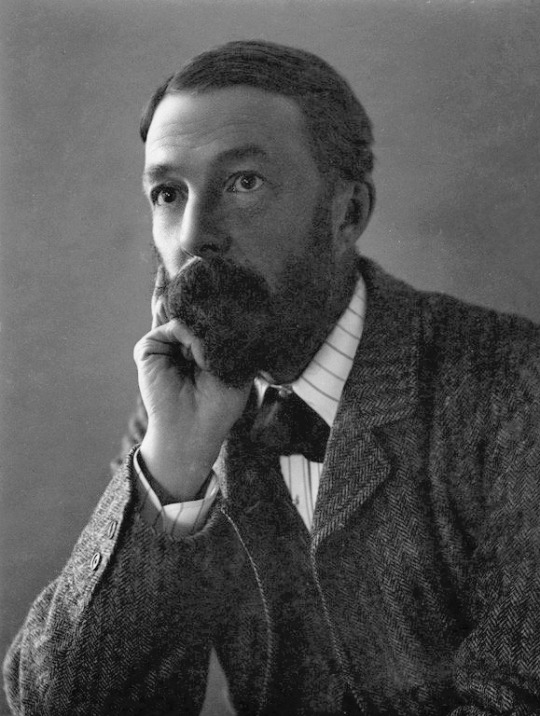
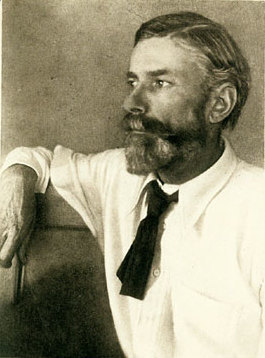
By the second half of the 19th century, that was starting to change. People like Karl Heinrich Ulrichs in Germany (on the left), and John Addington Symonds (middle) and Edward Carpenter (right) in the UK started to think of themselves as homosexuals - Ulrichs coined the term "Urning" which became "Uranian" in English. This period marked the beginning of organised campaigning for LGBT rights in the UK, though specific campaigning for lesbian and trans rights came later.
This means that in the 1890s setting of Dracula, any characters might think of themselves as "Uranian" or "Sapphic", or they might not yet have picked up that way of thinking. At a guess I'd expect Seward or van Helsing to be particularly aware of the new theory around homosexuality.
LGBT rights in law
It was a mixed time for the legal position of LGBT people. The death penalty for sodomy was abolished in 1861 in England, Wales and Ireland (1889 in Scotland), and replaced with minimum 10 years hard labour. In 1871, two amab people, Boulton and Park, were tried for dressing as women, but the judge ruled that this was not an offence under English law (though he also said that he thought it should be).
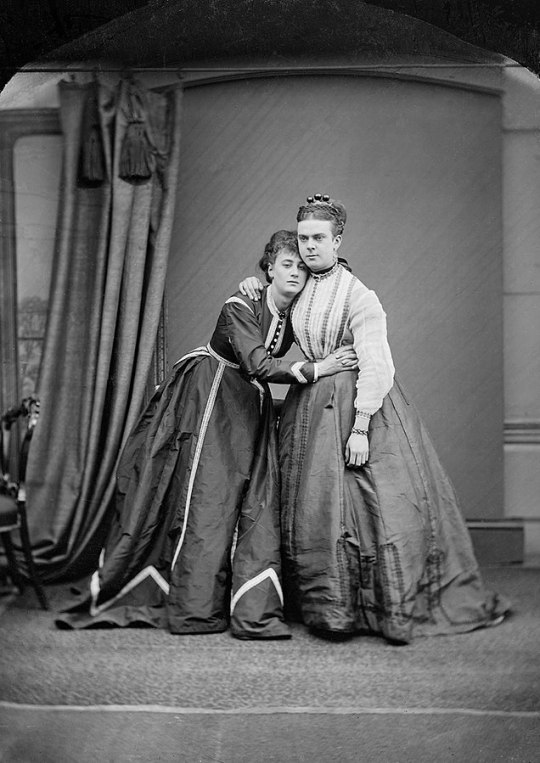
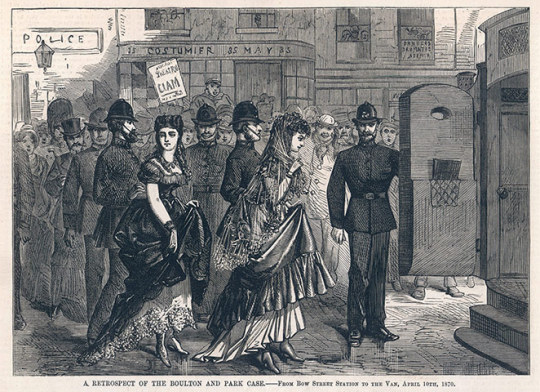
On the left: Fanny Park and Stella Boulton; on the right, the Illustrated Police News' depiction of their arrest.
And in 1885, the Criminal Law Amendment Act reduced the minimum sentence for gross indecency from 10 years' hard labour to two.
That said, before that act was introduced, there had to be a witness to any sodomy or gross indecency for it to be prosecuted. The Criminal Law Amendment Act changed that, so all private acts, arguably even love letters, could be prosecuted. So despite the reduction in sentences, this change to the law made life harder for queer men in the 1880s and 1890s. From a Dracula perspective, this means that people would be much more careful about what they wrote down - significant for a novel made up of documents.
Lesbian sex has never been illegal in the UK. (The idea that this was because Queen Victoria didn't believe in lesbianism is a myth). But in the 18th century there were a series of prosecutions of afab people who lived as men and married women. They were prosecuted for fraud when their birth sex was discovered, because they were perceived as having defrauded their wives. There were far fewer such prosecutions in the 19th century, possibly because of the belief that it was better not to create the publicity of a trial.
Victorian WLW
There are HEAPS of notable Victorian lesbians and bisexual women, including a lot in the suffragette movement. So I've chosen a few examples based on there being good images on Wikipedia.
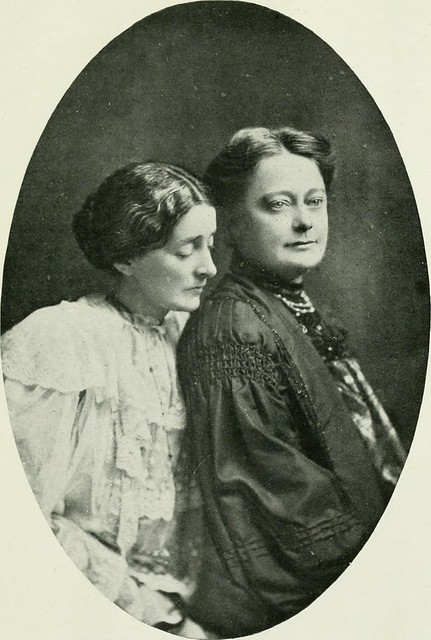


From left to right:
Margaret Benson and Janet (Nettie) Gourlay were Egyptologists who met at the excavation of the Precinct of Mut. Almost all of Benson's family preferred same-sex relationships.
Louisa Baring, Lady Ashburton, was briefly married to a man, but when she was widowed, began a 25-year relationship with American sculptor Harriet Hosmer. Harriet described herself as Louisa's "hubby".
Matilda Hays was a mixed-race writer and actress who had a relationship with American actress Charlotte Cushman, with whom she's pictured. Hays aimed to use her writing to improve the condition of women.
Victorian MLM
Again, I've chosen people to highlight through the very representative method of good photos.
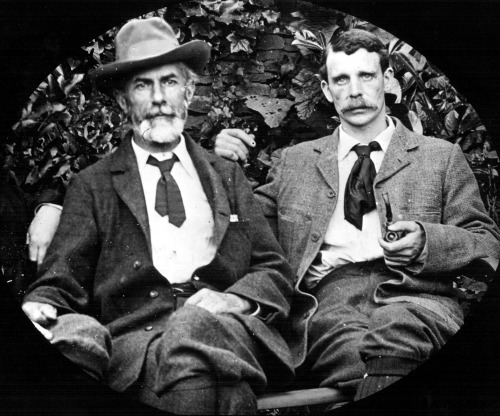
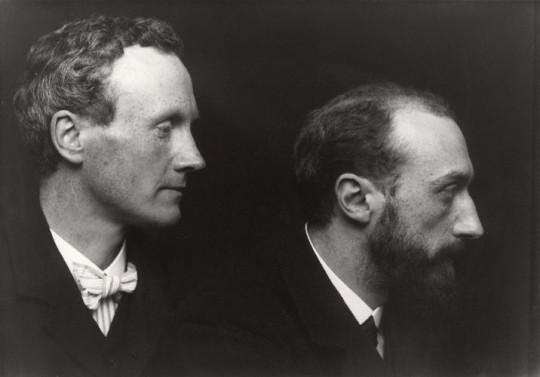

From left to right:
Edward Carpenter was a socialist, poet, philosopher and early gay rights activist who met his partner George Merrill on a train. The two men came from very different backgrounds: Carpenter from privilege, and Merrill from the Sheffield slums. Their 40-year relationship inspired the ending of EM Forster's novel Maurice.
Charles Ricketts and Charles Haslewood Shannon were artists who met as teenagers and lived together for more than 50 years. In the Times' obituary for Ricketts in 1931, their relationship was described as being "as remarkable as any of the great historic friendships, or the finest Darby and Joan examples of wedded felicity".
Ned Warren and John Marshall were art collectors who together were largely responsible for the Roman and Greek Art Collection of the Boston Museum of Fine Arts and the Metropolitan Museum of Art. Marshall married Warren's cousin, Mary Bliss, but only on the condition that the marriage would not be consummated. All three lived together until they died and were buried in the same tomb.
Trans Victorians
I wrote last year about Dr James Barry, a Victorian trans man, in the context of whether Jack Seward could be trans. (The post is from October, but spoiler free).
Eliza Edwards was an actress who died in 1833 at the age of 24. Her body was autopsied, and discovered to be - in the words of the autopsy - "a perfect man", which had apparently not been known to any of her friends or colleagues.
Harry Stokes was a bricklayer in Manchester, who was outed as trans in newspaper articles during his divorce 1838 and again after his death in 1859. He became something of a figure of fun after being first outed, but met another woman who lived with him as his life, and was broadly accepted by the local community as a trans man.
It was only through chance that James, Eliza and Harry were outed (and in James Barry's case, despite considerable efforts on his part). There might well have been hundreds or thousands more people like them.
And Boulton and Park, who I mentioned above, have usually been treated as transvestite men by historians, but could equally - had they had the terms themselves - be identified as trans women. Some contemporary newspaper articles even used she/her pronouns for them.
Asexual Victorians
Asexuality is tricky to spot in history, though even in 1896, German sexologist Magnus Hirschfeld was identifying it as a distinct phenomenon. What we do know is that more than 10% of women and a little under 10% of men in the 1890s never married, and in some cases that may well have been because they were asexual or aromantic.
From a Dracula perspective, family rumour held that Florence Stoker declined sex with her husband after the birth of their child. That may or may not have been true (and there's a ring of aphobia to some of the family's claims) but it shows how asexual people might also be found in apparently conventional marriages.
Sources
British Library: A Short History of LGBT Rights in the UK
British Library: A timeline of LGBT communities in the UK
Girlfriends of Dorothy: A Timeline of Lesbian Rights UK 1601 - 2020s (note: the site intends to be trans-inclusive, but genders John Barry as female.)
Open University: Lesbianism and the criminal law of England and Wales
“Constant Companions” and “Intimate Friends”: The Lives and Careers of Maggie Benson and Nettie Gourlay
Sapphic sexuality: lesbian myth and reality in art and sculpture
British Library: Transgender identities in the past
Warp and Weft: The extraordinary life of Harry Stokes
British Academy: Happy Families?
Coitus Interruptus: Sex, Bram Stoker, and Dracula
'Missing person' Florence Stoker added to DIB
751 notes
·
View notes
Text
Today is All Saints Day, and I'm observing it in a somewhat unconventional manner: cyberbullying the Anglican Church in North America
The ACNA, if you're not familiar, is a group that splintered off from the Episcopal Church in 2009. The reason for the schism was that they believed TEC had "gone astray" by ordaining women priests and affirming LGBTQ people, so a bunch of conservative Episcopalians and clergy split off into their own group: the ACNA. They claim to be "continuing" Anglicans, representing the "real" Anglican tradition in the US and Canada.
The reason I'm cyberbullying them on All Saints Day is because they are conspicuously missing a lovely, pious, respectable, and orthodox Anglican saint: Saint Aelred of Rievaulx (1110-1167 CE)
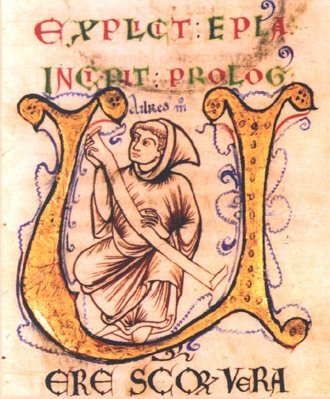
St. Aelred was a monk, abbot, historian, and spiritual writer from Northumbria. During his lifetime, the abbey boasted hundreds of monks and lay brothers, because Aelred was known for his friendly and gentle demeanor, wise leadership, and healthy community. He had the ear of kings and bishops all over northern Europe. He preached charity, humility, chastity, and all kinds of other Christian virtues. In short, he was the very model of a respectable medieval churchman.
He was also Very Much In Love With Men, and he wrote a treatise called "Spiritual Friendship," which might be nicknamed "How To Be In Love With Men In A God-Honoring Way." I've read it. It's wonderful and timeless and also very, very gay. He was in love with men. In a gay way.
Fast forward to the year 1980. Up until this point, St. Aelred had been a somewhat obscure local English saint. And then a groundbreaking new book was published which challenged all conventional narratives surrounding the Church and queer people in the Middle Ages: Christianity, Social Tolerance and Homosexuality by John Boswell. Boswell wrote at some length about Aelred and his love for men, drawing on his other work besides "Spiritual Friendship" and situating him into what was actually something of a "golden age" of gay culture in western Europe. Yes, really.
Fast forward again to the year 1985. At the Episcopal Church's general convention that year, members of Integrity USA (the original LGBTQ advocacy org in TEC) campaigned to have St. Aelred added to the calendar of saints. The House of Bishops agreed, and they added him to the church calendar with full knowledge that Aelred was gay.
Aelred was also physically disabled, and he wrote about his Spiritual Friend becoming "my hand, my eye, the staff of my old age": in other words, his Spiritual Friend was his caretaker as his health declined near the end of his life (which was still quite short even for a medieval person). He also describes the pain of his Spiritual Friend's early death in a way that remains tender 800 years later. I will leave you to imagine why that might be spiritually relevant to a bunch of nice church gays in 1985.
Fast forward again to 2009. The conservative wing of the Church has had enough of TEC's bleeding-heart liberal reforms, so they secede from the union leave and establish their own church without any icky queers or women priests. St. Aelred had been an official Episcopal saint for 25 years at that point, and the newly-formed ACNA had to consciously, deliberately choose to remove him from their calendar of saints.
Fast forward again to earlier this summer. I start doing research into queer Christian history and queer saints. I realize that Aelred is conspicuously missing from the ACNA's calendar, so I look into the background and decide to get obnoxious about it on Instagram. Because this is VERY embarrassing for a church that claims to be the "real" Anglican Church in North America.
A selection of memes for your enjoyment:




268 notes
·
View notes
Note
the post about the chess cheating is just flat out lying about a bunch of stuff by the way (i tried to explain how but it had kinda rant-y vibes for some reason so i guess i'll just leave it here? what a useless ask to send you. sorry)
Honestly every single version of that post, both for and against, has SOMETHING wrong and a bunch of people claiming other people are wrong without any sources and it's all a mess, but what's making me slowly morph from "Raised Eyebrow Disapproval" to "Actual Genuine Anger" is that absolutely no one seems to be paying attention to the important part: which is that this has rapidly become a gleeful global homophobic smear campaign against a 19 year old.
Like... I dunno, maybe this is part of my Generational Queerness, maybe this is just viscerally reminding me of George Michael being arrested, and Michael Barrymore being hounded out of public life and his career destroyed, and Julian Clary being intentionally driven off television. Each of these men were arrested or accused of other crimes. But each of them was really accused of being gay. And those stories followed this exact same pattern this one is: a sensational, lurid, gossipy and undeniably homosexual detail is taking centrepoint in every single discussion by press, pundits, critics, and public alike. The rest is secondary.
What mattered with George Michael was not the public bathroom - it was that he'd gone there to have sex with a man. What mattered with Michael Barrymore was not that someone tragically drowned in a pool at his house party - it was that the victim was his boyfriend and the party had gay sex in it. What mattered with Julian Clary was not that he told a risque joke in his comedy set - it was that he talked about being a gay queen.
What matters with Niemann is not that he cheated. It's that he "probably" used vibrating anal beads to do it. You know: like a big gross queer would.
Like... I cannot stress enough to any of you that I do not give the remotest shit, at this point, whether he has a history of online cheating, or whether his opponent actually just fucked up the game that day, or even who started the anal bead rumour and why. I could not give less of a shit if I tried. That is not even in the same league as the important part of all this. I do not care.
What I care about is the undeniably ghoulish glee with which the international press have leapt upon this and are spreading it about. What I care about is the way celebrities are wilfully spreading it about. What I care about is the way the public are sharing it with exactly the same shrill, giggly, high-on-drama hysteria that I remember them sharing about George Michael, and Michael Barrymore, and Julian Clary.
What I care about is that this is a homophobic witch hunt. A homophobic smear campaign. Against a 19 year old who may or may not even be gay, but that's definitely the direction the press (and their followers) are going to want to push this.
And I increasingly care about the way none of the rest of you seem to give a shit about that, when to me it is so luridly, flagrantly, and screamingly obvious.
I dunno. As I say: maybe this is just part of my Generational Queerness. Maybe I'm pattern matching. Maybe I'm seeing ghosts.
Maybe not.
1K notes
·
View notes
Text
Hello people of tumblr! :)
I am not used to using this app but I thought i would give it a shot as the fandom works featured here are straight up the best things i've found on the internet, and the community seems just AMAZING on all regards!!! So I thought, yk, that I would share my ideas for this AU fic that perhaps maybe I would write sometimes...... idk....
Actor Bucky x Model Buck
Set in the 90s, this AU follows this rough outline : despite the 90s being a time of counterculture for the youth, (grunge, alternative movies being pushed forward and towards larger audiences) and being out of the 80s and all it entails (glam rock and so on) there was this paradoxally reinforced idea of masculinity (leather jackets, men having to be "strong", etc.) and lattent ideas of homosexuality being a "bad, filthy thing" in some places, interlinked with the misinformations concerning the HIV epidemic (if you're gay, you'll get AIDS, you'll die in a few months, all this stuff), which causes the Bucks have to hide their relationship from the public in fear of retaliation and backlash.
Buck is a male model, in a decade in which supermodels are emerging, and put on a pedestal : it's a decent job for him, despite not being a Claudia Schiffer or a Kate Moss (as female models, especially in that decade, were getting paid way more than male models, and overall just represented couture houses more than men did.). People know his face, he's had a few campaigns, but it's not enough to make him one of the A-list celebrities, not that he minds. He's slimmer than what is the norm for male models, but compensates it with his face : it is his strength as much as his weakness concerning bookings. He is known by his peers as this wise and generally kind man, not overly flairy as people can sometimes be in their industry, and overall very discreet about his personal life. He is extremely professional, a master of his craft that knows exactly what is expected of him at any time.
Bucky, on the other hand, is an actor. Freshly discovered among the rest of a new generation of actors, he climbs steadily and surely his way to the top, and has people from all over the USA watching his career with interest. He acts in movies which in our timeline would feel like "The Matrix" ; "Trainspotting" ; "Fight Club", and all of those sorts of very "mainstream yet still posessing their bit a flair" movies. He's extending his choices and taking more risks, ones that could perhaps lead him to great rewards (not that he is especially looking for it : Bucky would be content to act in a short movie by a middle schooler if it was done with love and passion.) Charming, bubbly, he is loved by many of teenage girls (and others, ofc :p). Everyone has a story about Bucky, be it good or bad. "Oh yeah, he bought me a car when mine broke down" says a make-up artist on a set. "He got so drunk he forgot I was here and punched me square in the face when i got up to pee" says his friend Curt Biddick.
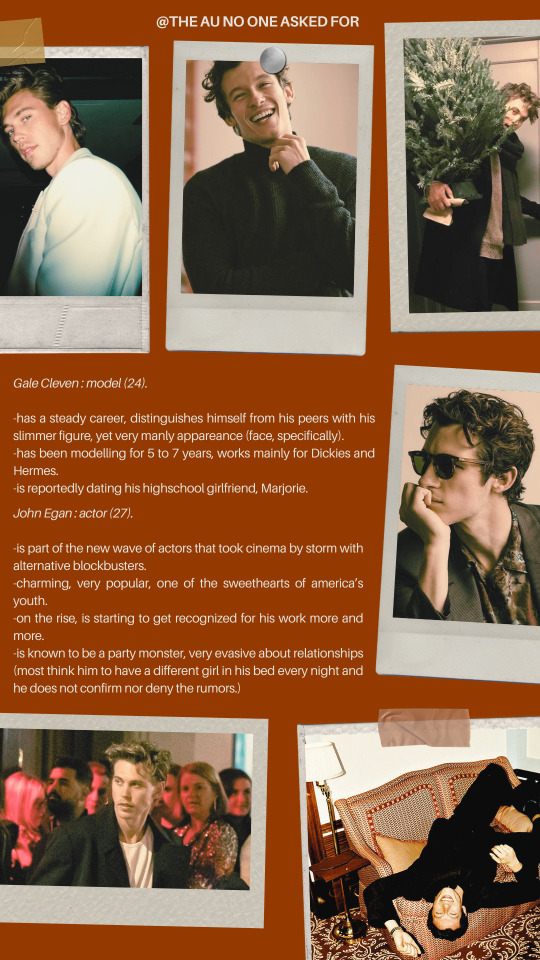
(i made an ugly ass moodboard for the vibes)
-> now i'm gonna dump random infos for no particular reasons
TW : mentions of drugs, alcohol, homophobic cliches.
-They met at a party/gala of some sort for a brand, for which Buck modeled and Bucky was ambassador : it didn't click right away, but closely enough for it to feel like fate played a part in it.
-Buck is kind of excluded during parties as he's fully sober, whether it's from drugs or alcohol : a rarity, in the modeling world, and often not a welcome one.
-Bucky on the other hand, is a bit too much of a party monster : he drinks a lot, perhaps snorts a little cocaine in the bathroom, takes a little speed... Which GREATLY concerns Buck.
-Bucky is as cocky in his confidence and his career as he fears (and represses A LOT) the possibility of everything tumbling down and just going back to being nobody (THIS MAN NEEDS TO BE LOVED BY EVERYONE)
-He's terrified that fame will change him, that he will become a parody version of himself, that people will only know and like the version of himself he presents them and nothing else, not seeing his worth as a person, as an individual of flesh and feelings.
-Between the two of them, he's the one who desperately wants to tell the general audience about their relationship, not caring about the consequences, because in his eyes, love is love, and there sure as hell ain't nothing wrong with loving Gale Cleven, and people should know that he loves him, that they love each other, that they're a pair, that life only ever feels complete when they stand side by side, hanging in each other's orbits. They sometimes argue over this.
-Buck, on the other hand, wishes for their relationship to stay a secret, as he fears if it was to be known, it would taint Bucky's image, this very manly, confident and suave man, mingle it with dumb cliches (in a gay couple one is a "Folle" and the other has to be effeminate, because they're like GIRLS yk) and that it would basically ruin his career, tarnish his talent and hard work, get him blacklisted from most studios/directors and only perhaps offered type-casted roles in homophobic movies written by straight men. Buck could not stand seeing the love of his life being disgraced in the public's eyes, just because of some dumbass cliches, because of his love for him.
-Marjorie (Marge) covers for Buck. She's his front : They are seen dining together and huddling on benches by paparazzis, giggling and talking as they walk in the street, and that's enough. Their story makes people dream, these two young people who grew up together and fell in love, still a couple until this day, still loving each other as much as they did on the first day... They are a lavender couple (when both member of a relationship are queer, and use their couple to cover any suspicions) which helps making Buck and Bucky seem like just buddies. Marjorie is most likely not famous, or if so, she'd be more of a writer than anything else.
-Bucky is EXTREMELY jealous and FUMES whenever he cannot kiss Buck in public, touch him, do his little Bucky things, make Buck feel his. Despite that, he's sort of reckless and allows himself gestures that would not fly were the two men not viewed as pinacle of masculinity and a great example of brotherly love. Buck can't even bring himself to ressent him for it, and does not hold it against him : he too wishes they could hold hands on red carpets.
-Bucky is basically a disaster waiting to happen at some point, a pressure cooker dangerously whistling : he bottles everything he feels, just grits his teeth and says he's fine when dark times arise, drowns himself in alcohol and wishes to forget about his worries, thinks about simpler times when he had none at all. Gale stays by his side, no matter what, no matter his terrifying relationship with alcohol and the memories of his father.
-They live together, despite the risks : Buck couldn't bear having to say no to Bucky when he bought their appartment with a huge check from the royalties he earned over his first blockbuster. It is approprietly cozy : most of the decorum is Buck's doing, but Bucky's things still find their ways in there ; baseball posters, pictures, awards and silly little drawings on stick-it notes... It feels like home, to both of them.
-They probably have bought some sort of ranch or farm, somewhere, to run away from the city when things get crazy : they bask reverently in the fact that there, nothing they do or say matters, watching the sunsets on their patios, enjoying the melody of nature without any civilization.
That's pretty much it for now, I'll most likely add things later! :D I'm begging you to excuse any mistake I made, i'm just a poor French person trying her best. Don't hesitate to tell me how you feel and stuff, I am so nervous to make this post you can't imagine lmaoo
To end things, I guess I'll just post an extract of a wip, a written transcription of a fake interview Bucky probably had on some talk show!!! :]
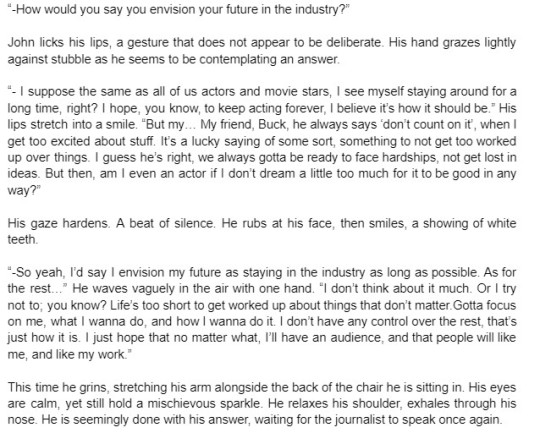
#clegan#buck x bucky#bucky x buck#gale cleven#john bucky egan#alternate universe#idk how to tag sorry#mota
90 notes
·
View notes
Text
I often wonder if I would feel differently about The Staircase Scene if I had seen SAF when it first came out in 2016. The first time I saw it was probably around October or November of 2023, and like... the context is different now.
Whatever we want to say about the personal story arcs of these characters (and I know I'm in a tiny minority because, for me, killing Owen does not constitute a satisfying close to Curt's arc, that's totally fine), there is the very real issue of the sociopolitical context that this scene takes place within- both in their time (1961) and in ours.
One very cool thing about SAF is that, in order to understand these characters better, a lot of younger queer folks end up learning about the Lavender Scare, about Executive Order 10450- which officially prohibited gay people from working for the US government- for the first time. That's an incredible, precious thing to me. Yay queer history! It's important!
The show itself never addresses the fact that both the US and UK governments had very public, very brutal campaigns equating homosexuality with communism with being a traitor to your country. But if you want to understand these characters, and especially write fanfiction, you're really incentivized to teach yourself some fundamentally important aspects of queer history.
In the 54 Below concert, before singing Not So Bad, Brian Rosenthal talks about how when they were developing the show they thought N@zis were more or less a thing of the past, that they're fully aware of how differently that song might be taken now after an escalation into a more open embrace of fascism in the US. And they're absolutely right about that.
But I think that's also perhaps an issue with the staircase scene, or at least it is for me. Obviously homophobia and transphobia were not "fixed" in 2016, they were still massive problems resulting in violence and discrimination and brutality. But institutionally, at least, you could look at the situation and point to some things that were gradually getting better.
In 2016 trans youth in my state were legally allowed to receive gender affirming care. In 2024, they are not. It's not that homophobia and transphobia went away and then came back, but there was a very real resurgence of the use of the media and of governmental power to inflict pain on queer & trans people and chase them out of public life- bathroom bans, gender affirming care bans, Don't Say Gay laws, trying to make drag illegal, equating queer and trans people with pedophilia. There has been a big cultural shift back towards the same kind of violent governmental moral panic that our beloved Curt & Owen would have lived under.
Whatever we want to say about these characters and this story (and there's tons of fascinating debate there), there is still the base of a gay man killing his ex-lover ostensibly to protect US foreign policy objectives. Killing the man he loves- or loved, at least- to protect the secret that he is gay. And that hits different for me now.
I watch that scene and it is heartbreaking on a personal level, but its also heartbreaking as a queer person who just wants to scream "your government will destroy you for being gay, you don't owe them shit!"
Owen tries to explain that the surveillance network is happening, that the future won't wait for Curt to catch up. Barb has been saying she's working on the same thing for the US government the entire show, but Curt just kept ignoring her. And I just want to say "Curt, honey, what do you think your government is going to do to you with that surveillance system? Do you think you're useful enough to keep around even though you have sex with men? Because I promise you they will not care."
It feels tragic to me because on some level it seems like Curt would actually be safer with another gay man having control of all the world's secrets than he will be if the government he has dedicated his life to gets their hands on that same technology.
And the thing is, having a tragic ending doesn't make the show bad. This show is great. This scene is spectacular. It makes you think, it makes you feel things, it does all the stuff that great art is supposed to do. Absolutely none of what I'm saying here is meant to denigrate the show as a musical or a story or even a queer story. I hope it doesn't come off as me saying "actually this show is bad," because I don't feel that way at all.
Clearly I live and breathe this show. That's why I spend all my time on here analyzing every scene, every frame, every facial expression. I love this show so much that I can't help but deconstruct it and look at all its component parts- including the sociopolitical context both now and in 1961. Because that context, despite never being explicitly mentioned, is important to our understanding of these characters.
I love these characters so much that it's actually pretty difficult for me to watch A2P7 anymore, because the staircase scene is so emotionally devastating to me that it's hard to try to swing back into that more comedic tone (even though Spy Dance is a certified bop).
I'm not even sure what my point is with all of this, other than to say that Spies Are Forever is a show that is great and fun and funny as written/performed, and becomes gradually more emotionally devastating when you rewatch it or when you understand the subtext of it. When you can engage with the themes of gender and sexuality, surveillance and technology, trauma and trust, and tease out even more satisfying theories around this show.
So yeah. It's a musical. It's about spies.
68 notes
·
View notes
Text
you want homosexuals in every conceivable scenario?
Boy oh boy do i have the substack for u: mine!
NO PLEASE LEMME TELL U THE STORIES BEFORE U LEAVE--
Current is Cinnamon Muffins. TLDR: Six queer boys in a homophobic tiny town in Iowa are trying to survive winter break dodging awful parents, social stigma, and mental health crises.
Next up is How to Get Away with Marriage. TLDR: Guy with awful, religious parents marries guy who is living paycheck to paycheck so they can both get all their younger sisters out of their shitty situations (but they fall in love ofc).
Longer desc of these plus the stories coming in the next months are below the cut! (Genres include fantasy, sci-fi, dystopian, mystery/thriller, coming-of-age)
Cinnamon Muffins centers on Taylor Macready, a homeless senior in high school holed up in a sleeping bag under a bridge after his parents kicked him out. He's fully ready to just accept death when it starts snowing on him while he's stargazing, but social outcast Wes Post is taking his nightly walk in a new direction and stumbles (literally) on his longtime crush, Taylor. Dragging Taylor home, Wes's parents prove themselves the only reasonable parents in this book by setting Taylor up on their pullout couch and nursing him back to health. Then Wes, whose closest school relationships include the kids who bully him for his anxiety-related speech impediment, has to get in touch with Taylor's friends to let them know the situation. Meanwhile, the mean girls of Swisher High School are starting a campaign to get homosexuality banned at school. Administratively, it gets nowhere, but it inspires several small-minded shitwads to take matters into their own hands. While Taylor is used to getting into fights, Wes isn't, but he'll have to sink or swim, because the teachers are not paid enough to care what happens in the hallways during lunchtime.
How to Get Away with Marriage opens with Luke Providence, son of a devoutly Baptist family in Nebraska, proposing to Patrick Demden, son of a recently-deceased alcoholic mechanic. The wealthy Providence parents have a longstanding agreement that once their children get married, they will receive a trust of $100,000 to use on the down-payment of a house and to start a life with their spouse. Patrick's younger sister tutors Luke's younger sister, but Patrick's sister is 16. This age gap doesn't matter much to the Providence parents, but it matters a lot to Luke, so he strikes a deal with Patrick: tell the parents he'll marry the sister, legally marry the brother, everyone gets to move to Colorado and escape abusive religious parents and crushing poverty. He needn't have done something so elaborate, Patrick would have married him for any reason at all. But the secret doesn't stay secret forever, and the Providence parents eventually come knocking, trying to recollect their children and their money.
Future stories I'll keep shorter, but feel free to ask about them either in the replies or my askbox and I'll elaborate!
Assassin x Demon King will be getting books 2 and 3! ADK is about an assassin and the king he was supposed to kill, both of whom have quit their jobs and started trying to save as many people as the assassin killed before he dies of a slow-acting poison in twelve months. Books 2 and 3 will have things getting awfully tragic and somewhat more horny than before! (No smut will make it into the print versions of these, that will remain on my substack alone)
How to Find Your Friends After the End of the World is a fantasy inspired by the isekai anime genre. Five friends in their 20s are on earth as it is wracked by a violent battle between the Heroine of the Gods and her Nemesis, and then, suddenly, they aren't. Earth has been destroyed and they are now on a new planet, in new (non-human) bodies, strewn across continents! On their new wrists, they have tattoos with each others' names, plus one (or two) new ones: their soulmates. Court politics and wastelands of monsters await them as they try desperately to reach each other, and their soulmates try desperately to reach them.
HtFYF will also have a prequel, focusing on the events that led to earth's destruction, and the battle between the Heroine of the Gods, a young woman, and her Nemesis, who seems to know more about the gods than she says. Why do the gods keep choosing such young heroes? What has the Nemesis done to put the world in such peril? Will the Heroine get to graduate on time despite the sleep she's been missing!?
The following do not yet have titles, but are fully fleshed out works ready to be thrown onto Substack:
A trilogy of eleven teens assisting in the fight against an agency that traffics, tortures, and then sells children with preternatural powers and abilities, and an exploration of the trauma those kids emerge with.
A murder mystery where a woman's sister dies, the police rule it suicide, and the woman enlists the help of a rumored contract killer to help her solve the murder-- but why does this rumored murderer-for-hire seem to know so much about her sister's death? And who was truly responsible?
A campy novel about a woman who graduates college, goes back to her hometown, and finds her highschool crush is still there, still single, and has since come out as gay. Of course, the only solution is to co-adopt an at-risk child from a neighbor.
This post will remain pinned on my profile, but for the next few days I'm having a sale on my substack tiers-- 20% off! That makes the cost to you just $8 per month to get a chapter every other day. 15 chapters for $8; that's a steal!
#support the author#indie author#substack#book recommendations#queer fantasy#queer scifi#queer mystery#queer romance#queer ya#wlw#mlm#queer rep#mlnb#wlnb
52 notes
·
View notes
Photo
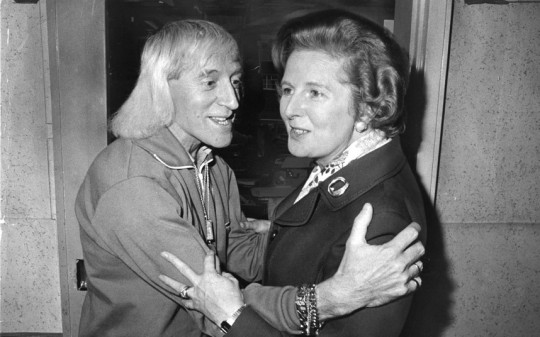
On this day, 8 April 2013, former Conservative prime minister Margaret Thatcher died. Street parties broke out across the UK, particularly in working class areas and in former mining communities which were ravaged by her policies. Her legacy is best remembered for her destruction of the British workers' movement, after the defeat of the miners' strike of 1984-85. This enabled the drastic increase of economic inequality and unemployment in the 1980s. Her government also slashed social housing, helping to create the situation today where it is unavailable for most people, and private property prices are mostly unaffordable for the young. Thatcher also complained that children were "being cheated of a sound start in life" by being taught that "they have an inalienable right to be gay", so she introduced the vicious section 28 law prohibiting teaching of homosexuality as acceptable. Abroad, Thatcher was a powerful advocate for racism, advising the Australian foreign minister to beware of Asians, else his country would "end up like Fiji, where the Indian migrants have taken over". She hosted apartheid South Africa's head of state, while denouncing the African National Congress as a "typical terrorist organisation". Chilean dictator general Augusto Pinochet, responsible for the rape, murder and torture of tens of thousands of people, was a close personal friend. Back in Britain, she protected numerous politicians accused of paedophilia including Sir Peter Hayman, and MPs Peter Morrison and Cyril Smith. She also lobbied for her friend, serial child abuser Jimmy Savile, to be knighted despite being warned about his behaviour. Margaret Thatcher was eventually forced to step down after the defeat of her hated poll tax by a mass non-payment campaign. Pictured: Jimmy Savile welcoming Thatcher to hell, reportedly. Learn more about the great miners' strike of 1984-5 in our podcast series: https://workingclasshistory.com/tag/1984-5-miners-strike/ https://www.facebook.com/photo.php?fbid=605239344982618&set=a.602588028581083&type=3
1K notes
·
View notes
Text
I realized something rather unsettling about E.M. Forster’s Maurice: it would’ve never happened at all—in fact it was so close to never having been written.
Why? Because the novel is a direct result of Forster's visit to Edward Carpenter and George Merril in 1913—specifically, a direct result of a Merril’s touch on Forster’s backside, but broadly of Carpenter’s philosophy and the life he had with his lover, the lower-class Merrill. But here’s the thing: Edward Carpenter and George Merril were almost charged, arrested, and/or imprisoned because of their sexuality and relationship.

Having published his controversial The Intermediate Sex which sought to justify homosexual love, Edward Carpenter came under fire and faced a large public reaction. Someone named D O’Brien, a member of a right-wing group instigated his own large-scale campaign against Carpenter. He printed out pamphlets and wrote letters accusing Carpenter, even sent them to the Home Office and the police who then started investigating Carpenter. The authorities evaluated Carpenter’s published books on homosexuality to determine merits of persecuting him.
However, the Director of Public Persecution at the time, Charles, decided not to open any legal proceeding. Because with the shadow of Oscar Wilde’s infamous trial still palpably felt in the society, he did not want to stir any public discussion about sex or homosexuality through Carpenter or his books. As such, no proceeding against Carpenter happened, and his books were not banned. This ended in 1909.
But the investigation did not stop there. The Derbyshire police was concerned with—and anxious about—getting a case against Carpenter and Merrill as two homosexuals. I think that since Carpenter was upper-class and had a solid reputation, the police went after Merrill instead, especially because O’Brien’s letters mentioned names of several people who knew about Merrill’s "indecencies". But these people were of no avail. Hence, no incriminating evidence was found against Carpenter “beyond strong suspicion”, and before 1911, the whole thing was thus, finally, dropped.
And Forster’s visit to the two men living together in Millthorpe happened in 1913.
(Below: a 1911 census showing Edward Carpenter, the head of house, living together with George Merrill, the housekeeper)
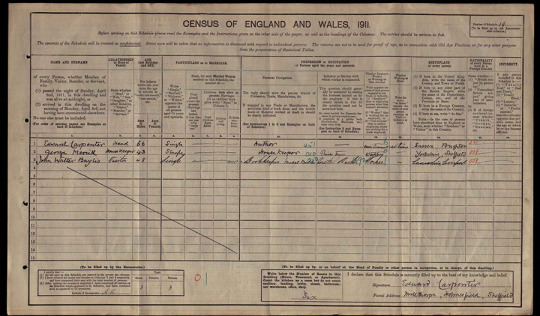
Imagine: had Carpenter and Merril been caught—and imprisonment was most certain for Merril due to his lower station—they wouldn’t have been together at where they were in 1913. Forster probably wouldn’t have visited Carpenter at their cottage at all, and thus, Maurice and its happy ending would’ve never been formed. The lives of the real life Maurice Hall and Alec Scudder could’ve been destroyed before their fictional counterparts had been conceived—and Forster would’ve never seen the happy gay couple he knew to write a gay romance novel with a happy ending.
(Forster could’ve written and even published another version of Maurice—albeit one with tragic ending and deaths of gay characters.)
I used to think Carpenter and Merrill evaded the laws and got through it all because they were smart and brave and discreet, but now I know they were also incredibly lucky, in the sense that it’s almost like Carpenter and Merrill were destined by some higher power to be together and live in an Edwardian gay fairy tale of happily ever after; they were meant to survive as outlaws and to welcome Forster into their home and inspire him to write a gay novel with a happy ending. “Fate has mated it perfectly,” might I quote from Forster himself.
(Below: a 1921 census showing Carpenter and Merrill living together still)

Probably in an alternate universe, Carpenter and Merrill were indeed arrested. Merrill went to prison and suffered the same as Wilde did; Carpenter however was let off due to his status (just like Forster had imagined for Maurice and Alec in real life his terminal notes). I don't want to wonder or ponder too much on that because for now, I'm just glad that I live in this timeline where a homosexual happy ending indeed happened in real life as well as in fiction, in the most impossible times.
Source: https://blog.nationalarchives.gov.uk/edward-carpenter-free-love-advocate-and-lgbtq-rights-pioneer/
#maurice 1987#maurice em forster#maurice#maurice hall#alec scudder#clive durham#em forster#oscar wilde#gay love#happy ending#edward carpenter#George Merrill#gay men#lgbt love#1900s#edwardian#edwardian era#england#lgbt rights#gay books#gay novel
500 notes
·
View notes
Text
Current times in the U.S. are NOT as similar to 1776 as they are to 1932 Germany
I've been saying for a long time that America is currently in its Weimar Republic stage, and if we don't stop the creeping neofascism now, we will go the way of earlier fascist nations. Probably, we will never be as extreme as Nazi Germany, but we might very soon look much like a neofascist contemporary nation like Viktor Orbán's Hungary.
Given this, I was happy to see the comment below made in response to an opinion column in the WaPo by Charles Lane: U.S. institutions are polling about as well as King George III did in 1776
"No, not 1776 at all. Far more like Germany in 1932, when a demented clown and his party of bigots and bullies told millions they’d been stabbed in the back by liberals and socialists, that they could make Germany great again and have anything they wanted, that everything they wanted made sense — if they would only elect a demented, debauched political party and its scheming head to lead the country and join in a hysterical campaign of demonization and vilification of less than 1% of the population.
"These same people pretended to be a movement espousing family values, where a woman’s place was solely in the kitchen, raising children and going to church. They held mass rallies where they encouraged their followers to jail their opponents and use violence against people who got in their way. Once in power they outlawed abortion, homosexuality, and jazz, suspended constitutional and legal rights, and claimed only white, blue-eyed people were deserving of life and liberty.
"Democracy is so very fragile. Turns out it only takes only a witches brew of fear and demonization to undo in a flash what institutions and constitutions have worked to create and sustain over many generations. When brutish, loud-mouthed bullies promise to make your country great again, this is really what they have in mind."
--cbl55 Sylvester the Cat, commenting on a WaPo opinion column: U.S. institutions are polling about as well as King George III did in 1776
#america at the crossroads#weimar republic#neofascism#1776#we need to do something before it is too late#charles lane#the washington post
230 notes
·
View notes
Text
In anti-gay and anti-trans campaign ads, the threat to children was essentially a threat to the social body, embodied as a generalized child of the racial majority. A majority of ads portrayed prepubescent white children, pictured as between two and 10 years old, described as “little,” “small,” “young,” or “impressionable.” At times, teenagers were included in stories of sexually experimenting teens and hustlers. Almost all children pictured in these ads appear to be white, evoking appeals to protect children of the dominant race. Ads occasionally described these children as “your daughter” or used scenarios about one’s own children. However, 85 percent of frames address children more generally, often referring to “our children,” as in “protect our children.” For example, a 1994 Idaho campaign ad proclaimed: “They will demand…the right to adopt our children.” The children in question are not the reader’s children, who presumably are not up for adoption, but rather the community’s children. In this imaginary, “our children” are implicitly heterosexual, gender normative, and reared by heterosexual parents trying to protect them from exposure to LGBT life.
This generalized child represents not just the imperiled subject but also perhaps the most vulnerable part of the public body, a symbol of community vulnerability, the perpetuation of society, and maintenance of the social order. Queer theorist Lee Edelman (2004) refers to this concern as reproductive futurity, an investment in white heteronormativity and its future that is fixated on children. The threat to reproductive futurity was surprisingly white itself. All portrayals of gay men and trans women in the Religious Right literature appeared to be white. Racial ideologies have long conflated homosexuality with whiteness (Collins 2005; Connell 2014), which is echoed in Religious Right literature that constructs homosexuality as both intrinsically male and white (Herman 1997). The threat to the generalized white child from within the majority race may be the construction of the ultimate stranger, individuals subsumed within the public body who are marked only by their gender and sexual variance.
#religious right#conservatism#lgbt#transgender#transphobia#stranger danger#social science#homophobia
140 notes
·
View notes
Text
Gay teens who couldn't come to terms with their sexuality share how they removed their breasts and genitals in false hope that becoming transgender would 'cure' them, as concerns mount that 'gender-affirming care' for children is homophobic
By: Harriet Alexander
Published; Feb 3, 2024
Several young people who transitioned as teenagers, in a bid to cope with their sexuality, have spoken to The New York Times
They all said they wished their surgeons or those prescribing hormone therapy had asked more questions about their mental health and motivations
A study cited by the paper showed that 80 percent of those with childhood gender dysphoria resolve themselves by puberty
Gay teenagers disturbed by their own sexuality have described deciding life would be better as a transgender person and undergoing surgery - only to regret it several years later.
The young people said that, in hindsight, drastic surgical operations were offered with insufficient discussion or thought. Their stories emerged as concern grows that so-called gender-affirming care for children is homophobic, as it permanently changes the bodies of children and young adults who are not transgender, but merely trying to come to terms with their sexuality.
One told of being abused online by trans rights activists when, after five years living as a trans man, they realized they wanted to revert to being a lesbian woman.
Another, who began transitioning from male to female at the age of 15, now campaigns against surgical intervention under 25 for anyone who has not had psychotherapy first.
Yet another, growing up as a lesbian in a conservative community, convinced herself life would be easier as a trans man and had a double mastectomy - only to revert to living as a woman six years later.
Studies cited by The New York Times showed that many teenagers wrestling with their identity and sexuality ultimately found peace: 80 percent of childhood gender dysphoria resolve themselves by puberty, and 30 percent of people on hormone therapy discontinue its use within four years, the paper said.
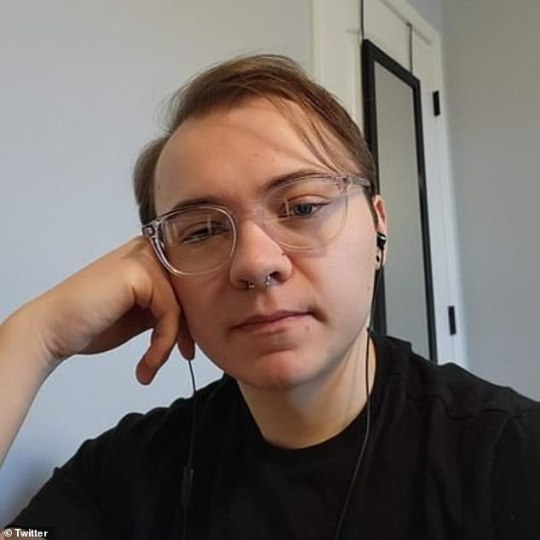
[ Kasey Emerick, a 23-year-old woman and detransitioner from Pennsylvania, had a double mastectomy at 17 and lived as a trans man for five years ]
The effects of the hormone therapy, including infertility, are, however, often irreversible.
Kasey Emerick, a 23-year-old woman and detransitioner from Pennsylvania, told The New York Times she saw living as a trans man as a better alternative to being a gay woman.
'I transitioned because I didn't want to be gay,' she said. 'I believed homosexuality was a sin.'
Emerick, who grew up in a conservative Christian church, told her mother at 15 that she was gay.
Her mother told her it was likely a response to her father, who was convicted of raping and assaulting her repeatedly from the ages of four to seven.
At 16, Emerick was caught texting a girl, and her mother took her phone away: Emerick was then admitted to a psychiatric hospital.
Emerick convinced herself inside the hospital: 'If I was a boy, none of this would have happened.'
She said she found trans advocacy websites online, and felt she could 'pick the other side.'
At 17, after two 90 minute consultations, she was cleared for a double mastectomy - despite the anxiety, depression, suicidal tendencies, panic attacks and ADHD she was also suffering.
'I'm thinking, 'Oh my God, I'm having my breasts removed. I'm 17. I'm too young for this,' she recalled, but said she went ahead with the operation.
'Transition felt like a way to control something when I couldn't control anything in my life,' she told the paper.
Emerick lived as a trans man for five years, but then realized she was no happier, and began detransitioning - despite online threats from trans activists.
'I thought my life was over,' she said. 'I realized that I had lived a lie for over five years.'
One man, Paul Garcia-Ryan, lived as a woman from the age of 15 to 30, undergoing bottom surgery in college.

[ Paul Garcia-Ryan, now 32, founded an organization to help other young people considering surgery to transition - which he had, and regrets ]
He has detransitioned and is now, aged 32, a psychotherapist in New York, treating young people who suffer from gender dysphoria.
Garcia-Ryan told The New York Times he believes no one under the age of 25 should be allowed surgical procedures unless they have seen a psychotherapist.
He said he was driven to identify as a trans woman because he could not countenance being a gay man.
'It was much less threatening to my psyche to think that I was a straight girl born into the wrong body — that I had a medical condition that could be tended to,' he said.
He said that, when he sought medical help aged 15, the clinic immediately confirmed his own thoughts, rather than challenging them.
He said he had surgery in college, but suffered severe complications from the surgery and hormones, which made him reconsider his decisions.
'You're made to believe these slogans,' he said. 'Evidence-based, lifesaving care, safe and effective, medically necessary, the science is settled — and none of that is evidence based.
'When a professional affirms a gender identity for a younger person, what they are doing is implementing a psychological intervention that narrows a person's sense of self and closes off their options for considering what's possible for them.'

[ Aaron Kimberly, a 50-year-old trans man living in British Columbia, transitioned at the age of 33, but argues that too many young people are not sufficiently questioned before undergoing the procedures ]
Grace Powell, who grew up in a conservative community in Grand Rapids, Michigan, said that she became convinced that her sexuality would be 'solved' by living as a trans man.
She had a double mastectomy the summer before college, then went off as a transgender man named Grayson to Sarah Lawrence College.
Powell, now 23 and detransitioned, told The New York Times she wished more questions were asked before she opted for the life-altering procedures.
'I wish there had been more open conversations,' she said.
'But I was told there is one cure and one thing to do if this is your problem, and this will help you.'
Aaron Kimberly, a 50-year-old trans man living in British Columbia, transitioned at the age of 33, and lives happily as a man.
But he said he left his job at a clinic treating gender-dysphoric young people because he felt there was not enough emphasis on mental health treatment, before surgical options or hormones.
He then founded the Gender Dysphoria Alliance and the L.G.B.T. Courage Coalition, to advocate better gender care.
'I realized something had gone totally off the rails,' he said.

#Harriet Alexander#detrans#detransition#medical corruption#medical scandal#medical malpractice#Kasey Emerick#Paul Garcia-Ryan#Paul Garcia Ryan#Grace Powell#Aaron Kimberly#gender affirming healthcare#gender affirming care#gender affirmation#affirmation model#gay conversion therapy#gay conversion#conversion therapy#woke homophobia#homophobia 2.0#religion is a mental illness
23 notes
·
View notes
Text
THIS DAY IN GAY HISTORY
based on: The White Crane Institute's 'Gay Wisdom', Gay Birthdays, Gay For Today, Famous GLBT, glbt-Gay Encylopedia, Today in Gay History, Wikipedia, and more … April 15

2019; the historic Notre-Dame de Paris caught fire during a restoration campaign, and the blaze destroyed most of the cathedral's roof, the 19th-century spire, and some of the rib vaulting.


1452 – Leonardo da Vinci, the Italian Renaissance polymath, was born on this date (d.1519); How much of what is known about the sexuality of this greatest of history's geniuses is fact and how much is speculation?
In 1476, just as Leonardo was becoming a master in his own right, probably functioning as a partner to Verrocchio, he was suddenly plagued by scandal. Along with three other young men, he was anonymously accused of sodomy, which in Florence was a criminal offense, even though in most cases the authorities looked the other way and the general culture attached little social stigma to homosexuality.
Leonardo was 24 years old at the time. The accusation specifically charged him with a homosexual interaction with one Jacopo Saltarelli, 17 years old, "a boy of ill-repute" . The charges were brought in April, and for a time Leonardo and the other defendants were under the watchful eye of Florence's "Officers of the Night"—a kind of renaissance vice squad.
However, the charges were dismissed in June, due to a lack of witnesses and evidence. It is probable that the Medici family brought had something to do with this outcome, as another of the defendants was Lionardo de Tornabuoni, and Lorenzo de Medici's mother had been a Tornabuoni.
The second major implication of the sodomy case is, of course, the question of Leonardo's sexuality. Homosexuality was common in quatrocento Florence, and several things indicate that Leonardo was probably gay. He never married or showed any (recorded) interest in women; indeed, he wrote in his notebooks that male-female intercourse disgusted him. His anatomical drawings naturally include the sexual organs of both genders, but those of the male exhibit much more extensive attention. Finally, Leonardo surrounded himself with beautiful young male assistants, such as Salai and Melzi.

"Salai" as John the Baptist
He complained in his notebooks of his attachment to his student Andrea Salaino, whom he nicknamed "Salai" "("little devil"). Calling Salai a liar and a thief, he was nonetheless obsessed with the handsome young man to have left him a good portion of his estate. He also painted him in a gorgeous portrait as "John the Baptist" seen above.Francesco Melzi, Salai's replacement as Leonardo's 'assistant,' was left the larger part of the master's estate.
These are the known facts. That Leonardo chose his students for their looks is contemporary gossip. That all his female subjects were painted from young male models, including the Mona Lisa, is speculation.
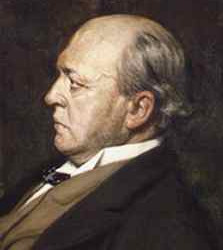
1843 – Henry James, (d.1916) was an American-born writer, regarded as one of the key figures of 19th-century literary realism. He was the son of Henry James, Sr., a clergyman, and the brother of philosopher and psychologist William James and diarist Alice James. He is best-known for The Turn of the Screw, Daisy Miller, and The Ambassadors.
In a brilliant series of articles, endorsed by James's biographer Leon Edel, Richard Hall has shown that James was actually in love with his brother, the Harvard philosopher William James. This finally puts to rest the speculations that have ranged (Honest to God!) from a severe, lifelong case of constipation to his having been hit in the nuts with a pump handle to explain why the famous writer seems to never have had a sex life.
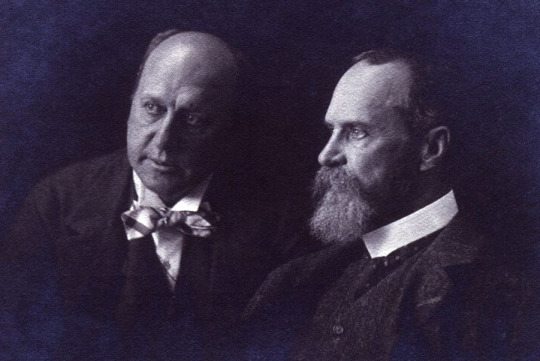
Henry and William James
James had, in fact, proclaimed himself "a bachelor." But as the diaries of contemporaries and hundreds of affectionate and sometimes erotic letters written by James to younger men have come to light, the picture of neurotic celibacy have given way to a portrait of a closeted homosexual, although as author Terry Eagleton has stated, "... gay critics debate exactly how repressed his (probable) homosexuality was ..."
From the late 1890s until the end of his life in 1916, Henry James, by then a permanent expatriate resident in Lamb House, Rye, Sussex, England, kept up a faithful correspondence with four considerably younger men: sculptor Hendrix Andersen, British writer Hugh Walpole, fellow expatriate Howard Sturgis, and Jocelyn Persse.
James's letters to expatriate American sculptor Hendrik Christian Andersen have attracted particular attention. James met the 27-year-old Andersen in Rome in 1899, when James was 56, and wrote letters to Andersen that are intensely emotional: "I hold you, dearest boy, in my innermost love, & count on your feeling me—in every throb of your soul". In a letter of 6 May 1904, to his brother William, James referred to himself as "always your hopelessly celibate even though sexagenarian Henry". How accurate that description might have been is the subject of contention among James's biographers, but the letters to Andersen were occasionally quasi-erotic: "I put, my dear boy, my arm around you, & feel the pulsation, thereby, as it were, of our excellent future & your admirable endowment." To his homosexual friend Howard Sturgis, James could write: "I repeat, almost to indiscretion, that I could live with you. Meanwhile I can only try to live without you."
His many letters to the young gay men who made up a large fraction of his close male friends are more forthcoming. In a another letter to Howard Sturgis, following a long visit, James refers jocularly to their "happy little congress of two" and in letters to Hugh Walpole he pursues convoluted jokes and puns about their relationship, referring to himself as an elephant who "paws you oh so benevolently" and winds about Walpole his "well meaning old trunk". His letters to Walter Berry printed by the Black Sun Press have long been celebrated for their lightly veiled eroticism.
The letters point to a complicated intimacy that James, nearing 60, fostered with these youthful admirers, friends and house guests during his years of declining health and increasing emotional frailty. James seems to have played shifting roles within each relationship: mentor, father, brother, erotic companion, confidant.
James is paternal with Hendrik Andersen, for example, but he also writes of a wish to "put my hands on you (oh, how lovingly I should lay them!)" He is nurturing to Dudley Jocelyn Persse, but also refers to their "promiscuous social exercise." His letters are replete with dazzling melodrama: to Hugh Walpole he writes, "I too, even poor ponderous & superannuated I, am leading the Life for a little, in my clumsy way & with a vocation & a genius so inferior to yours."
The outbreak of World War I was a shock for James, and on 26 July 1915, he became a British citizen as a declaration of loyalty to his adopted country and in protest against America's refusal to enter the war. James suffered a stroke on 2 December 1915, and it soon became apparent that his prognosis was not good. The novelist, now seriously ill, was awarded the Order of Merit, bestowed on 1 January 1916. His health continued to decline and he died in London on 28 February 1916. He was cremated at Golders Green Crematorium and his ashes are interred at Cambridge, Massachusetts.

1907 – The American fashion and commercial photographer George Platt Lynes was born on this date (d.1955). He spent his childhood in New Jersey but attended the Berkshire School in Massachusetts. He was sent to Paris in 1925 with the idea of better preparing him for college. His life was forever changed by the circle of friends that he would meet there. Gertrude Stein, Glenway Wescott and Monroe Wheeler—a twosome with whom he became number three in a ménage à trois — and those that he met through them opened an entirely new world to the young artist.
He returned to the United States with the idea of a literary career and he even opened a bookstore in Englewood, New Jersey in 1927. He first became interested in photography not with the idea of a career, but to take photographs of his friends and display them in his bookstore. Returning to France the next year in the company of Wescott and Wheeler, he traveled around Europe for the next several years, always with his camera at hand. He developed close friendships within a larger circle of artists including Jean Cocteau and Julien Levy, the art dealer and critic. Levy would exhibit his photographs in his gallery in New York City in 1932 and Lynes would open his studio there that same year.
He was soon receiving commissions from Harper's Bazaar, Town & Country and Vogue including a cover with perhaps the first supermodel, Lisa Fonssagrives. In 1935 he was asked to document the principal dancers and productions of Lincoln Kirstein's and George Balanchine's newly founded American Ballet company (now the New York City Ballet). While he continued to shoot fashion photographs, getting accounts with such major clients as Bergdorf Goodman and Saks Fifth Avenue during the 1930s and 1940s he was losing interest and had started a series of photographs which interpreted characters and stories from Greek mythology.

Minotaur
By the mid-1940s he grew disillusioned with New York and left for Hollywood in 1946 where he took the post of Chief Photographer for the Vogue studios. He photographed Katharine Hepburn, Rosalind Russell, Gloria Swanson and Orson Welles, from the film industry as well as others in the arts among them Aldous Huxley, Igor Stravinsky and Thomas Mann. While a success artistically it was a financial failure.
His friends helped him to move back to New York City in 1948. Other photographers, such as Richard Avedon, Edgar de Evia and Irving Penn, had taken his place in the fashion world. This combined with his disinterest in commercial work, meant he was never able to regain the successes he once had.
Focus on homoerotic imagery started to take over his photographic life. He had begun in the 1930s taking nudes of his circle of friends and performers, including a young Yul Brynner, but these had been known only to intimates for years. He began working with Alfred Kinsey and his Institute in Bloomington, Indiana. The Kinsey Institute for Research in Sex, Gender and Reproduction, as it is known today holds the largest collection of his male nudes.
By May 1955 he had been diagnosed terminally ill with lung cancer. He closed his studio. He destroyed much of his print and negative archives particularly his male nudes. After a final trip to Europe, Lynes returned to New York City where he died.
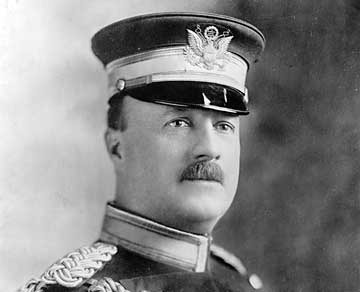
1912 – Died: Major Archibald Willingham Butt (born.1865) was an influential military aide to U.S. presidents Theodore Roosevelt and William Howard Taft. Before becoming an aide to Roosevelt, Butt had pursued a career in journalism and served in the Spanish-American War. He died in the sinking of the RMS Titanic.
On January 2, 1900, Butt received a commission as a Captain of United States Volunteers in the United States Army.He served in the Philippines from 1900 to 1904. In 1904, he was made Depot Quartermaster of Washington, D.C., where he met President Theodore Roosevelt. In 1906, he was sent to Cuba to as part of a pacification force. In 1908, now a captain, Butt was recalled to Washington to serve as chief military aide to President Roosevelt. When William Howard Taft became President the following year, Butt stayed on in the same capacity. In 1911, Butt was promoted to the rank of major.
Butt lived with his longtime domestic partner, the American painter Francis Davis Millet, in an old-fashioned district of Washington, D.C.. "Millet, my artist friend who lives with me" was Butt's designation for his companion. In D.C. they were known for throwing large parties that were attended by members of congress, justices of the Supreme Court and President Taft, himself. As a result of a society not wanting to pry into their lives, insiders in Washington tried not to focus too closely on the men's relationship, but they recognized their mutual affection.
By 1912, Taft's first term was coming to an end and Roosevelt, who had fallen out with Taft, was known to be considering a run against him. Very close to both men and fiercely loyal, Butt was caught in the middle. As his health was deteriorating during this period, his friend Millet asked Taft to give him a leave of absence to recuperate before the presidential primaries began. Taft agreed and ordered Butt to go on vacation.
Butt left on a six-week vacation to Europe. He was accompanied for part of his vacation by Millet, his longtime domestic partner. Butt booked passage on the RMS Titanic for his return to the U.S. He boarded the Titanic at Southampton, UK on April 10, 1912; his partner Millet boarded the ship at Cherbourg, France later that same day. Butt was playing cards on the night of April 14 in the first-class smoking room when the Titanic struck an iceberg. The ship was completely submerged by 2:20 AM the next morning, and plunged to the ocean floor.
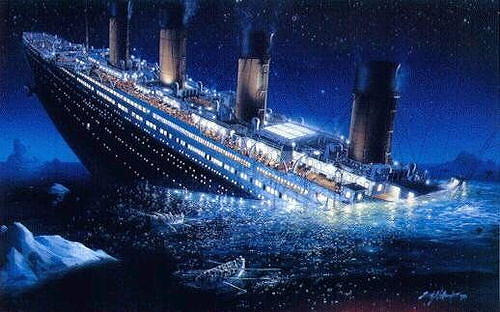
Major Butt's actions on board the ship while it was sinking are largely unverified, but conflicting accounts were published by newspapers after the disaster. According to some accounts, Titanic captain Edward J. Smith informed Butt that the "ship was doomed" and that "lifeboats were being readied." Butt immediately began acting as another officer of the ship, herding women and children into the lifeboats. However, one account tells of Butt preventing desperate steerage passengers trying to escape. Walter Lord's book A Night to Remember disagrees with claims that Butt acted like an officer, claiming he was more likely quietly observing the ship's evacuation.
Butt was last seen in the smoking room, making no attempt to save himself. He went down with the Titanic; his remains were not found; however Millet's body was found later floating on the sea and was returned to the U.S. for burial. The memorial fountain erected in the Ellipse area of the President's Park in Washington is called the Butt-Millet Fountain.
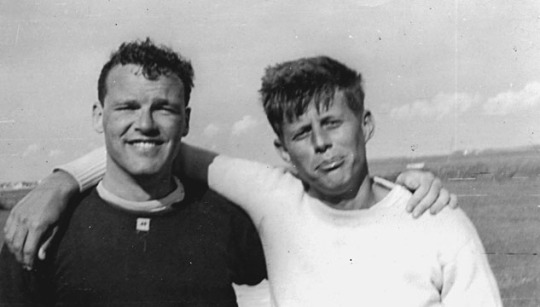
Lem Billings and JFK 1935
1916 – (Kirk LeMoyne) Lem Billings (d.1981) was a close friend of President John F. Kennedy and the Kennedy family. Billings was a prep school roommate of Kennedy, an usher at his wedding, and a campaigner for his successful 1960 presidential bid. Joseph Kennedy, Sr. called him "my second son," and he sometimes acted as escort to several of the Kennedy women. Billings served with Sargent Shriver as a trustee for the Kennedy family trusts.
The book 'Jack and Lem: The Untold Story of an Extraordinary Friendship' by David Pitts, deals with the late President’s lifelong friendship with Lem Billings, after the pair first met at school. The book, first issued in 2007, claims President John F Kennedy had a special room in the White House reserved just for his gay best friend. The pair were so close that they wrote lengthy letters to each other whenever they were apart.
In a subsequent book "RFK Jr. and the Dark Side of the Dream" Jerry Oppenheimer claimed the pair had "a friendship that included oral sex, with Jack always on the receiving end".
Billings, a 16-year-old third-year student, and Kennedy, a 15-year-old second-year student, met at Choate, an elite preparatory school, in the fall of 1933. Billings as a teenager was 6' 2", weighed 175 pounds, and was the strongest member of the Choate crew. They became fast friends, drawn to each other by their mutual distaste for their strict school.
From Billings's first visit with the Kennedy family for Christmas in Palm Beach in 1933, he joined them for holidays, participated in family events, and was treated like a member of the family.
Lem Billings was at Choate on scholarship. Billings repeated his senior year so that he and Kennedy could graduate from Choate together in 1935. They spent a semester together at Princeton University until Kennedy withdrew for medical reasons. While attending college, they frequently spent weekends together in New York City.
Some historians believe that Billings expressed his sexual interest in Kennedy in writing in 1934 and that Kennedy rebuffed his advances. Kennedy knew Billings had rightly been accused of homosexual behavior by a fellow Choate student during their years there.
Billings and Kennedy took a summer trip through Europe in the summer of 1937.
In 1941, Billings failed medical tests required by the military. In 1942, supported by a recommendation from Joseph Kennedy, Sr., he won admission to the American Ambulance Field Service, where his poor eyesight was not a disqualification. He saw action in North Africa in 1942–43. In 1944 he received a commission in the U.S. Naval Reserve and served in the South Pacific until being discharged in 1946.
After working on Kennedy's successful campaign for Congress in 1946, Billings toured seven Latin American countries with Kennedy.
Friends from the 1970s confirmed that Billings was homosexual, but not open to discussing it. In 2006, looking back to the Kennedy Administration, Ben Bradlee said: "I suppose it's known that Lem was gay....It impressed me that Jack had gay friends." At the same time, he admitted that no one ever expressed the idea aloud during Kennedy's White House years.
Red Fay, a friend of the President from his World War II service, said of Billings: "I didn't see anything overtly gay about him; I think he was neutral."
Though newspapers often mentioned Billings' attendance at major social events, they identified him either as the escort of a member of the Kennedy family or included him in a list of Kennedy friends. Otherwise he attended without a female partner.
One historian wrote that after the 1963 assassination Billings was: "Probably the saddest of the Kennedy 'widows'."
Charles L. Bartlett, a journalist who introduced Kennedy to Jacqueline Bouvier and friend of both Billings and Kennedy, described their relationship: "Lem was a stable presence for Jack. Lem's raison d'être was Jack Kennedy. I don't think it's true that he did not have views of his own, as some have said. He had a very independent mind. He had interests of his own that Jack didn't necessarily share. He certainly didn't have the same interest in politics and women that Jack had."
Though Gore Vidal thought Billings was "absolutely nobody," he also believed "it was a good idea that Jack had somebody he could trust like that around him." He believed Billings loved Kennedy.
"Jack made a big difference in my life," Billings said. "Because of him, I was never lonely. He may have been the reason I never got married."
After the assassination of Robert Kennedy in 1968, Billings became depressed and started to drink in excess, an addiction that plagued him for the majority of his life. He maintained close ties to the Kennedys and their children for the rest of his life, frequently socializing with Bobby Kennedy, Jr., to whom he became almost a surrogate father, and Christopher Lawford.
On May 28, 1981, Billings died in his sleep in his Manhattan apartment following a heart attack. His dying wish was for the young Kennedy men to carry his casket to its final resting place. When they arrived at the cemetery, it was already in place to be lowered. The young Kennedys took the casket and carried it around the grave site before returning it to the burial plot.


1950 – Lasse Nielsen, born in Copenhagen, is a Danish director and screenwriter. He is representative of Danish film of the 1970s. His coming-of-age films revolve around the topics of first love and awakening desire in adolescence as well as homosexuality.
Lasse Nielsen and his twin brother Carsten Nielsen were born in Copenhagen, Denmark. His cinematic work began after the founding of the Danish Film Institute in 1972, which sponsored many of his early projects.
Together with his brother, Nielsen wrote the scripts for the two feature films Let's Make (1975) and Could We Maybe (1976). From his third feature film You Are Not Alone (1978) up to and including the short film The Game ( post-production in 2017 ), Nielsen has worked with screenwriter Bent Petersen. He also did the directing work in collaboration with Ernst Johansen 1975 and 1978 and with Morten Arnfred 1976.Nielsen also maintains a long-term partnership for film music. The singer, guitarist and composer Knud Torben Christensen, also knwn as Sebastian, wrote the music for Could We Maybe as early as 1976 . 40 years later, his song Når lyset bryder Fremd provides the soundtrack for the 14-minute short film The Kite.
In his feature film The Story of Net, released on video in 2010, Lasse Nielsen can be seen in a supporting role as Mr. Kim.
In 2018, six male and sixteen female former child actors accused the two directors of sexual abuse during the production of You Are Not Alone and other films.


1952 – Glenn Shadix (d.2010) was an actor best known for his role as "Otho" in Tim Burton's Beetlejuice and for his southern baritone voice.
Shadix became fascinated with the power of film and television from childhood when the family would gather rapt for nightly television programs. He gravitated to theater and appeared in every production of his High School's drama club while he was a student.
Shadix informed his parents that he was homosexual in 1969, and, under the threat of being exiled from his immediate family, enrolled in an experimental "aversion therapy" program administered by a Dr Hainey at the UAB Medical Center. To "cure" him of his homosexual desires, painful electroshocks were delivered to Shadix while he viewed male pornography.
During the same summer, he worked re-capping tires at his step-fathers shop and went on a series of unpromising dates with women. The combined ordeal led him to attempt suicide by an overdose of Elavil, after which he was confined to the hospital's psychiatric ward for three weeks.
He made his professional acting debut alongside noted actress Peggy Cass in a summer production of "Goodbye, My Fancy" at Florence State in 1972.
Shadix lived in New York City prior to moving to Hollywood in the late 1970s. While there he befriended playwright Tennessee Williams while working as a production assistant for Vieux Carré at the St James Theater. Once in Los Angeles, he joined The Groundlings, an improv troupe.
Shadix's film debut was a bit part in the 1981 remake of The Postman Always Rings Twice. His success with the Ensemble Studio Theater brought him to the attention of director Tim Burton, who cast him in the major role of Otho. After that, he and Burton became good friends and Shadix was frequently cast in Burton's projects. He was offered his role in The Nightmare Before Christmas while swimming in Burton's backyard pool. He found steady work as a voice artist for various animated series and continued to work as a character actor in smaller films. His first starring role was as "Peter" in 2002's Shut Yer Dirty Little Mouth, an independent film version of the play "Shut Up, Little Man!", which was inspired by audio-verite recordings made of arguments between San Francisco roommates Peter Haskett and Raymond Huffman in the late 1980s.
Shadix underwent gastric bypass surgery in April 2000 and lost more than 100 pounds. In the mid-2000s he retired from acting and moved to the G. H. Stevenson residence in Bessemer to be closer to family. While in the area he participated in local theater programs and was active with Birmingham AIDS Outreach. In September 2010 he fell in the kitchen of his condo and suffered a fatal head injury.

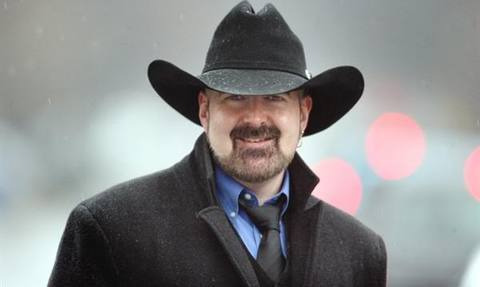
1970 – Drake Jensen is a Canadian country music artist. Jensen was born in Glace Bay, Nova Scotia, on Cape Breton Island.
Drake Jensen gave cowboys something to sing about when he pushed down his closet door in February, 2012. They were forced to hold their horses, though, because Jensen also revealed he has a husband, who appeared in the music video for Jensen's single "On My Way to Finding You," a video dedicated to Jamie Hubley, an Ottawa gay teen who committed suicide after being bullied.
youtube
Jensen and his partner, Sean Michael Morin, who is also his personal manager, were married in 2008.
When Jensen publicly announced that he is gay, he told his story of severe childhood abuse and bullying.
"As a child I always knew there was something different about me above and beyond the gay thing. Even during the worst of the bullying I always felt I would make it through. have been so lucky to be given so much, I have no choice but to give back. I give back through my music and through my story. I'm a homosexual musician telling my story through songs and spreading the message of love. In a perfect world, what could be wrong with that?"


1972 – In Ottawa a visible gay contingent joins Viet Nam Mobilization Committee demonstration protesting the visit of US president Richard Nixon to Canada.


1977 – Born: Eddie Stone, whose real name is Patrick Marano, a Canadian gay pornographic actor (porn star) from Montreal, Quebec. He was a champion swimmer at school. Stone was discovered while go-go dancing in a nightclub in Los Angeles, California. He was previously the midday host on the world's first gay and lesbian commercial radio station, 103.9 Proud FM in Toronto, Ontario. He is in a relationship with journalist Shaun Proulx.
In 2003, after appearing on Chi Chi LaRue's internet sex site Live And Raw, Eddie signed an exclusive contract with her studio, Rascal Video. He starred in fourteen movies for Rascal from 2003-2005, most notably When in Rome, Stone Fox, Eddie Stone's Private Screening, Set in Stone, Master of the House, and Little Big League 2: Second Inning, which he also wrote. A screenwriter, Stone also penned Sharp & Unknown: Ghost of a Chance for Rascal Video.
During his time with Rascal, he appeared on the cover of several gay porn magazines: XXXShowcase, the limited edition Rascal magazine, and Unzipped. He also appeared in the erotic coffeetable book Warning!
In 2004, he embarked on a European tour to promote the Live And Raw book, visiting eight cities, including Berlin, Paris, Vienna, and Zurich. He has traveled coast to coast doing live appearances and has been interviewed in magazines, on Jason Sechrest's "The Young & the Curious" radio show, and on QTV. Eddie Stone's porn fame and good looks have led to mainstream modeling jobs for magazines such as GQ.
A sensfirm dildo has been cast from Stone's penis. No longer with Rascal, but with no plans of retiring, Eddie Stone was, and still is, one of Chi Chi LaRue's most popular exclusive performers.


Luke Evans as Zeus in "Immortals"
1979 – Luke Evans is a Welsh theatre and film actor. He is known to theatregoers for his stage roles in Rent, Miss Saigon, Small Change and Piaf, and to filmgoers for his roles in Immortals, The Three Musketeers, Clash of the Titans, and Tamara Drewe.
Evans got his first film audition aged thirty. In 2009, he landed his first film, playing the Greek god Apollo in the 2010 remake Clash of the Titans. Also in 2010, he appeared as Clive in the film Sex & Drugs & Rock & Roll, and as the Sheriff of Nottingham's thug in Robin Hood, alongside Matthew Macfadyen. Evans played the Musketeer Aramis in Paul W. S. Anderson's version of The Three Musketeers (filmed in 2010 and released in 2011). He was cast in a lead role in Tarsem Singh's Greek epic, Immortals (2011), in which he played the King of the Gods, Zeus.
During his early career, Evans openly identified as gay. In a 2002 interview, he said "[E]verybody knew me as a gay man, and in my life in London I never tried to hide it" and that by being open he would not have "that skeleton in the closet they can rattle out". In 2004, he said that his acting career had not suffered by being out.
And in 2004, Evans told gaydarnation.com about his stockpile of gay porn: "I bought my first film when I was 15, and now I have a good collection and I add to it regularly. I research it almost every night." His pornstar preference? "An enormous big fat cock."


1979 – The Sisters of Perpetual Indulgence is founded in San Francisco by Ken Bunch (Sister Vicious PHB), Fred Brungard (Sister Missionary Position), and Baruch Golden. Their mission is "to promulgate universal joy and expiate stigmatic guilt."


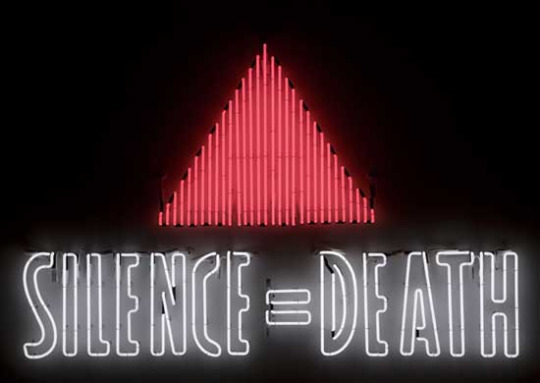
1987 – on this night the AIDS activist group ACT UP held their an protest action at the New York City General Post Office, to a captive audience of people filing last minute tax returns. This event also marked the beginning of the ACT UP Silence = Death Project, which created the famous poster consisting of a right side up pink triangle (an upside-down pink triangle was used to mark Gays in Nazi concentration camps) on a black background with the text "SILENCE = DEATH."
The author Douglas Crimp speaks of the "media savvy" of ACT UP at this demonstration on this date, because of the television media "routinely do stories about down-to- the-wire tax return filers." As such, ACT UP was virtually guaranteed media coverage to draw attention to the government silence around the spreading pandemic of AIDS.


19 notes
·
View notes